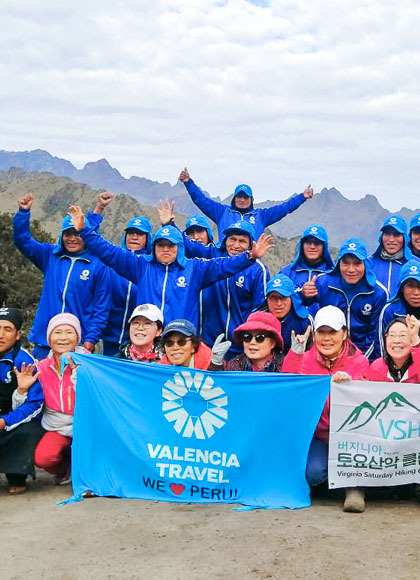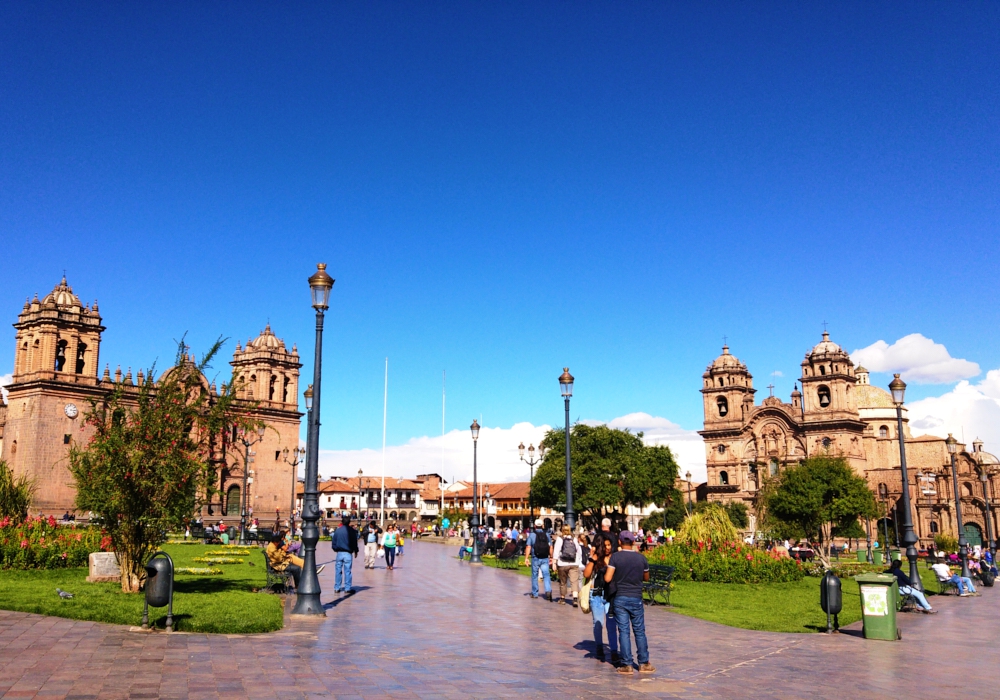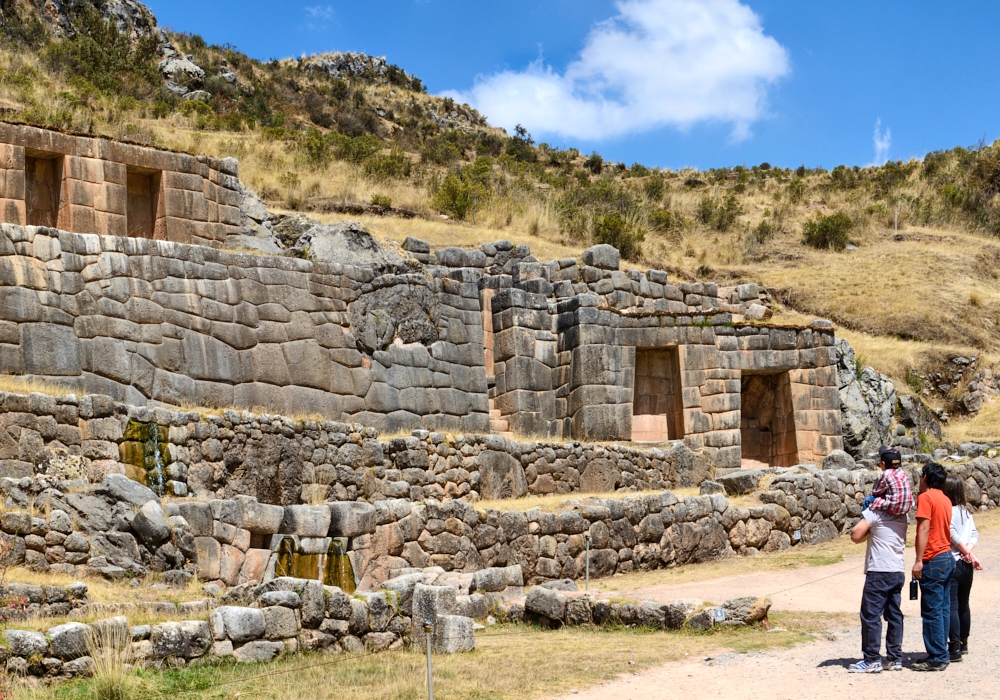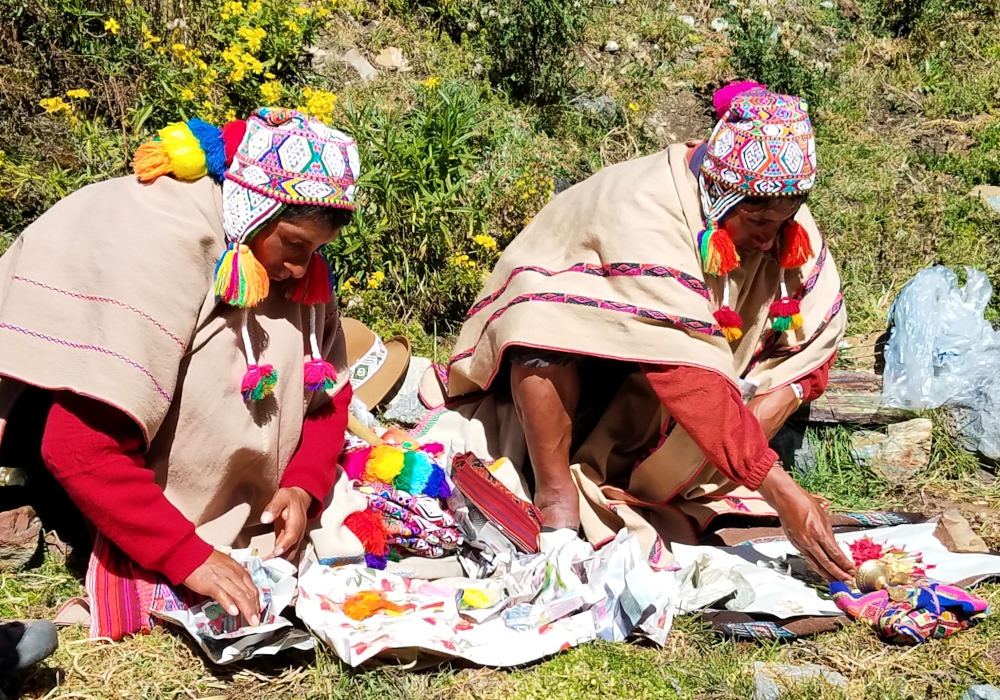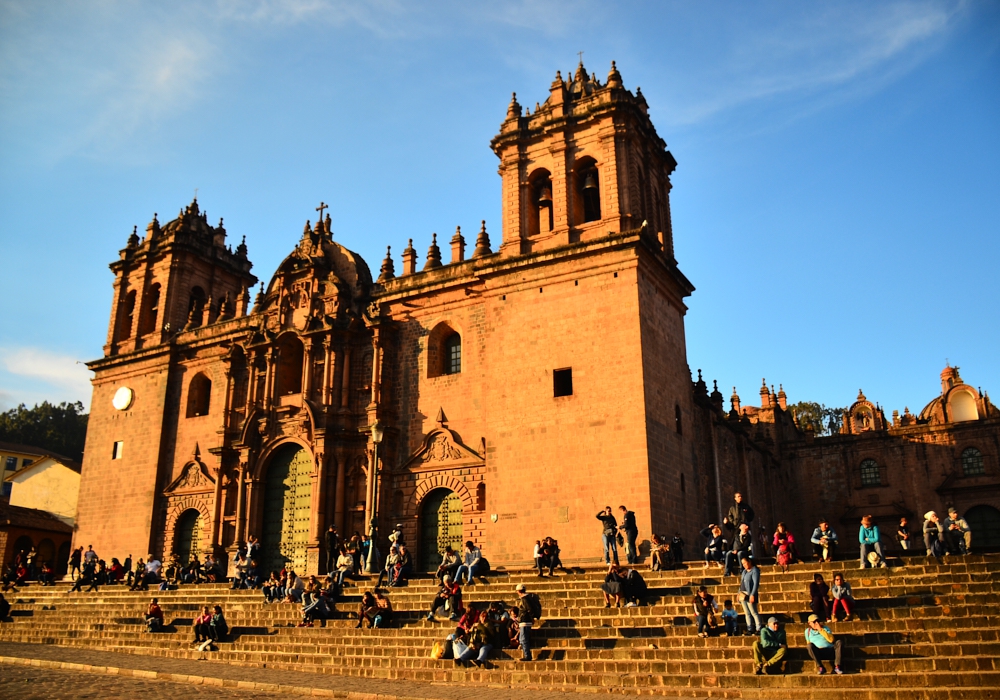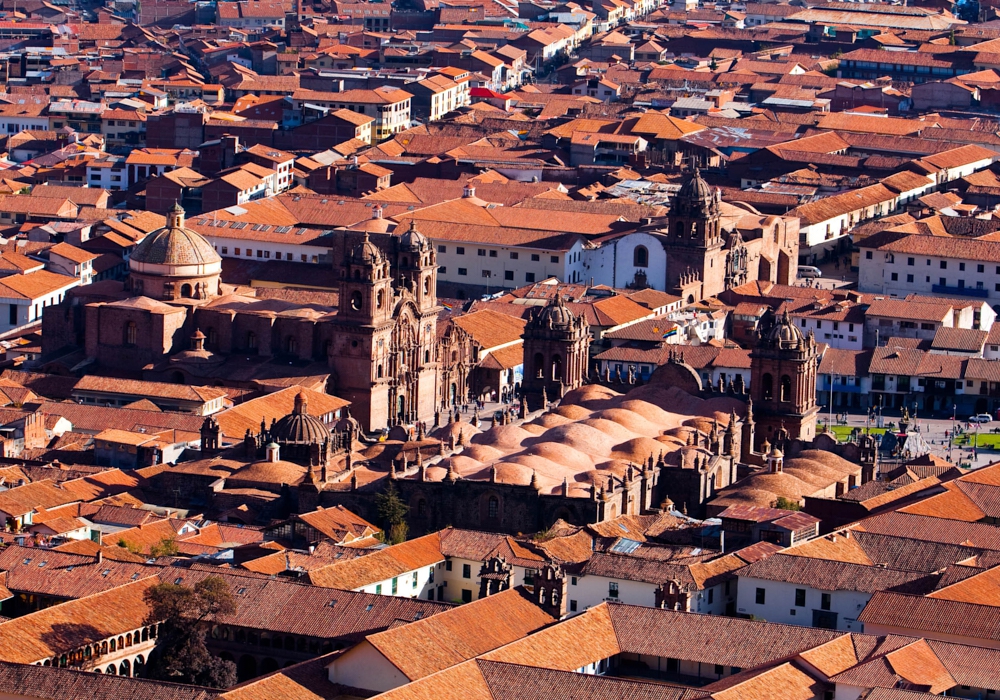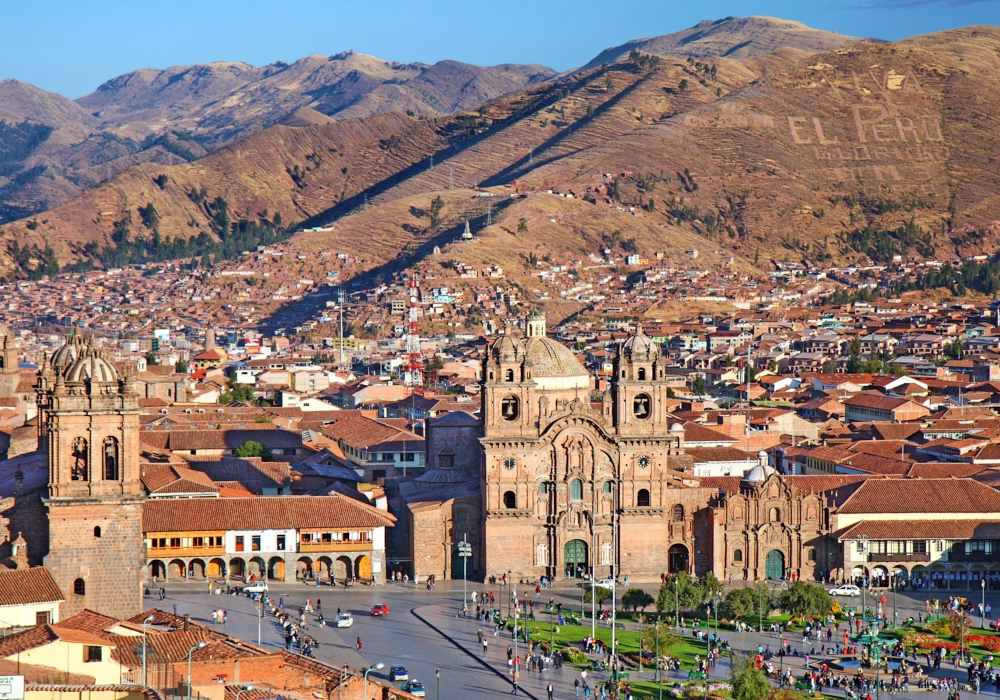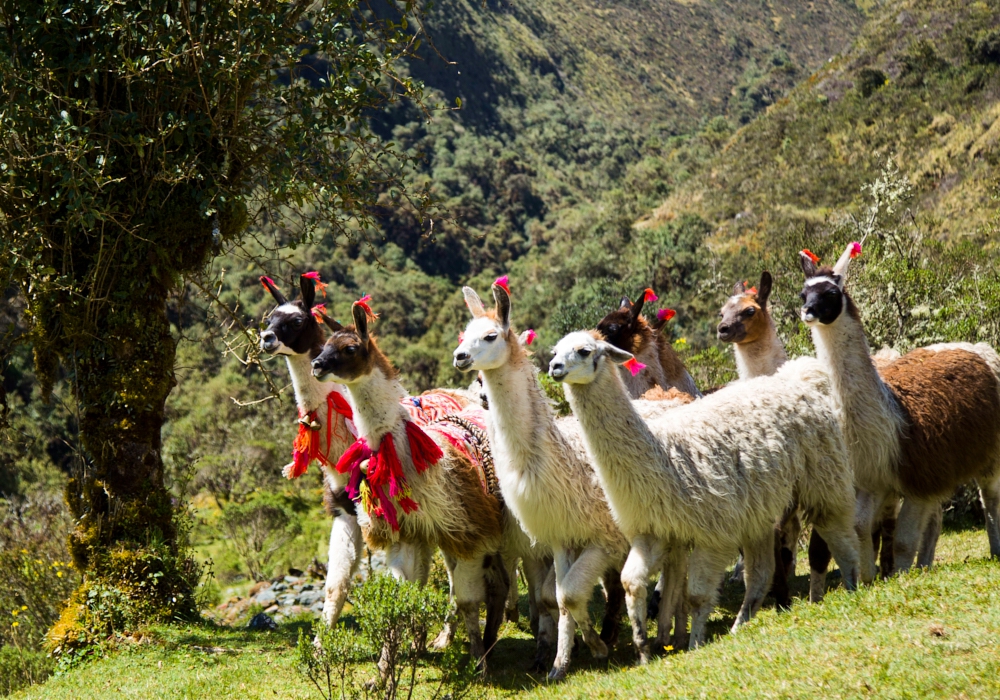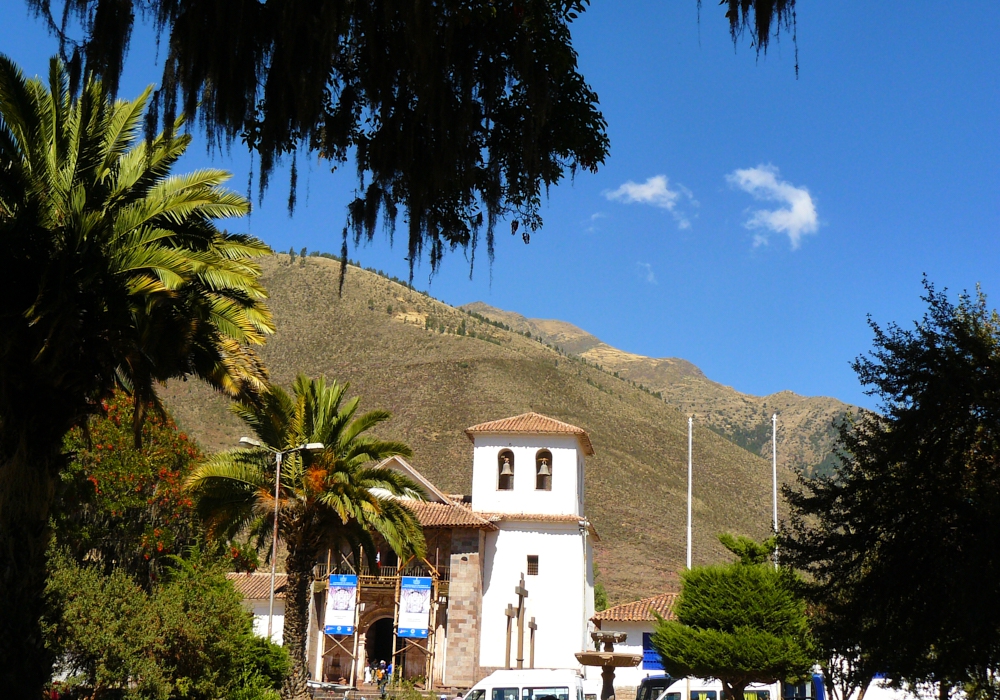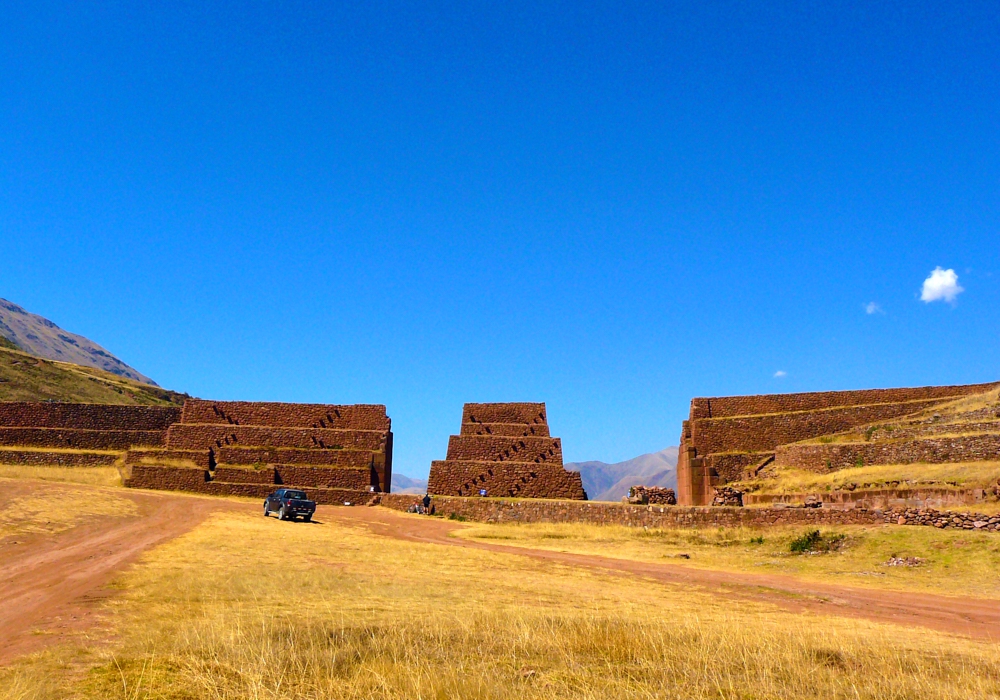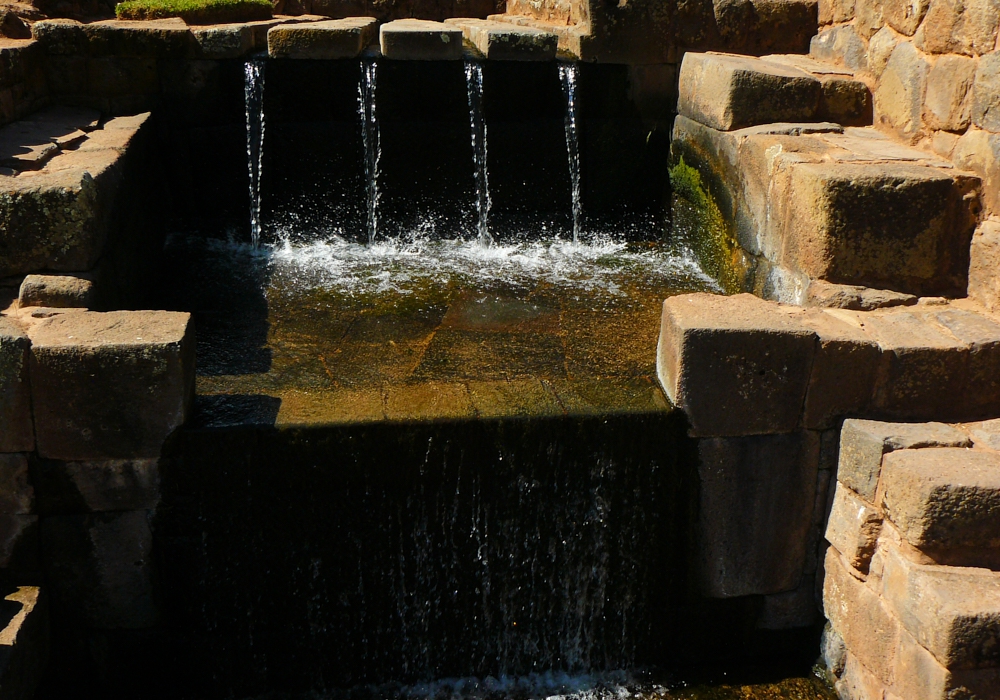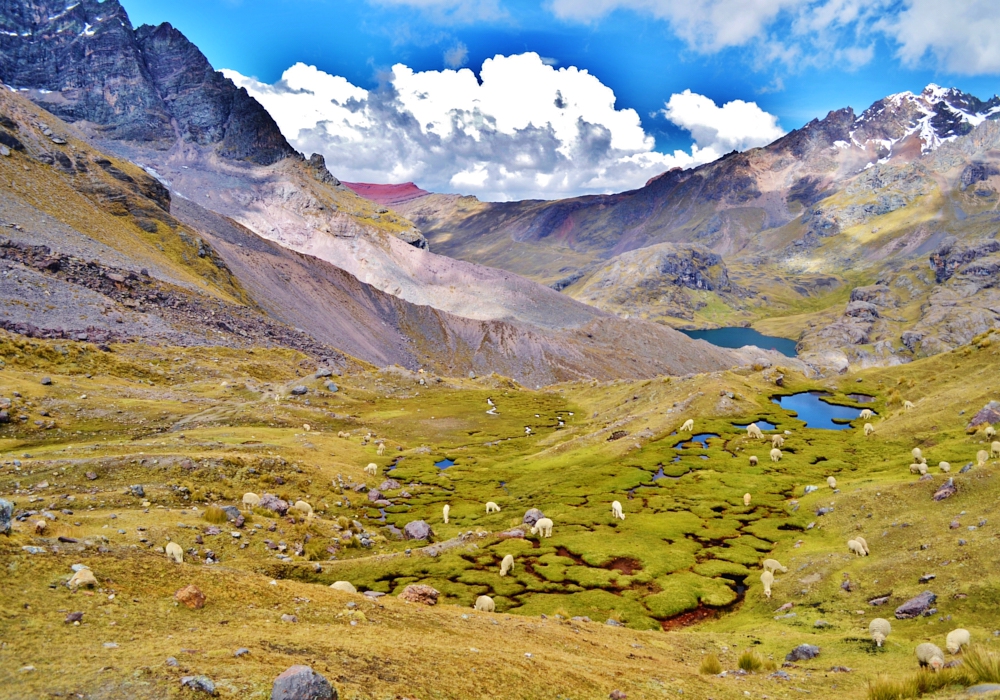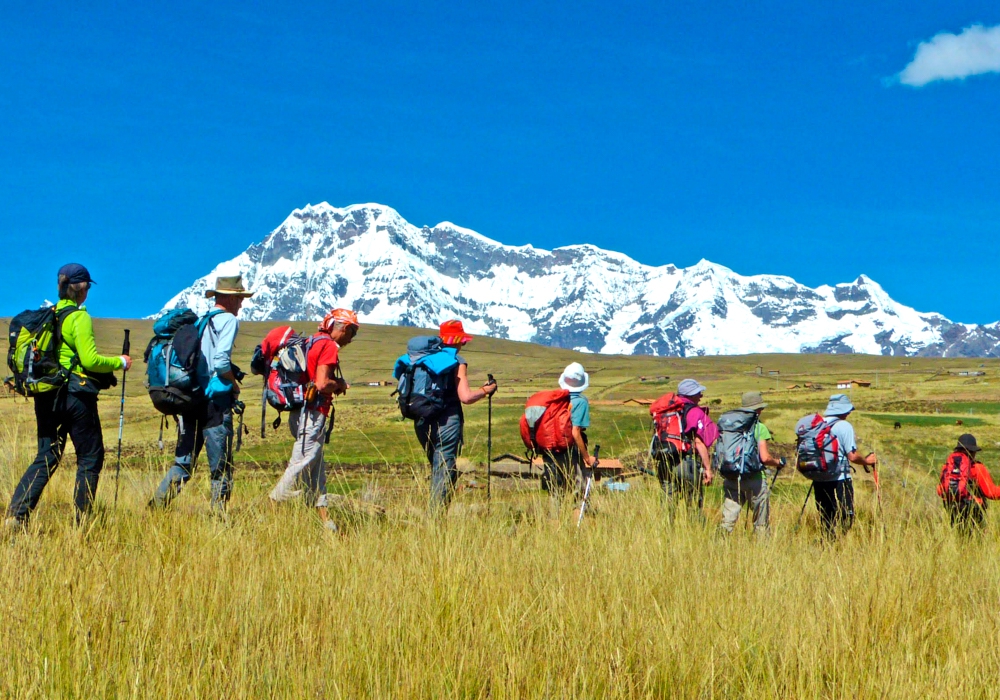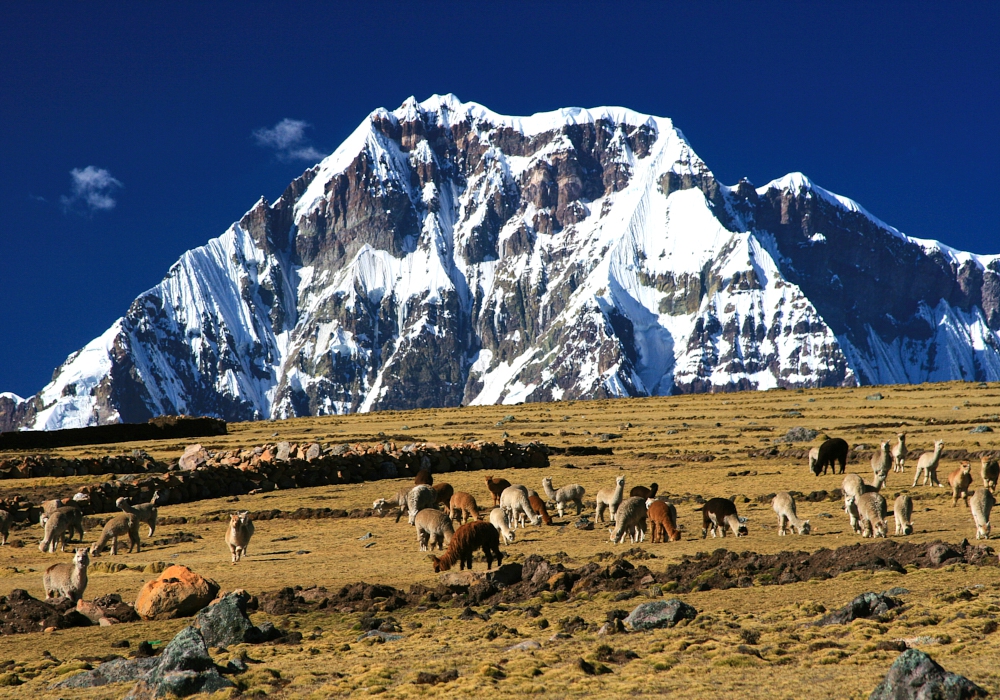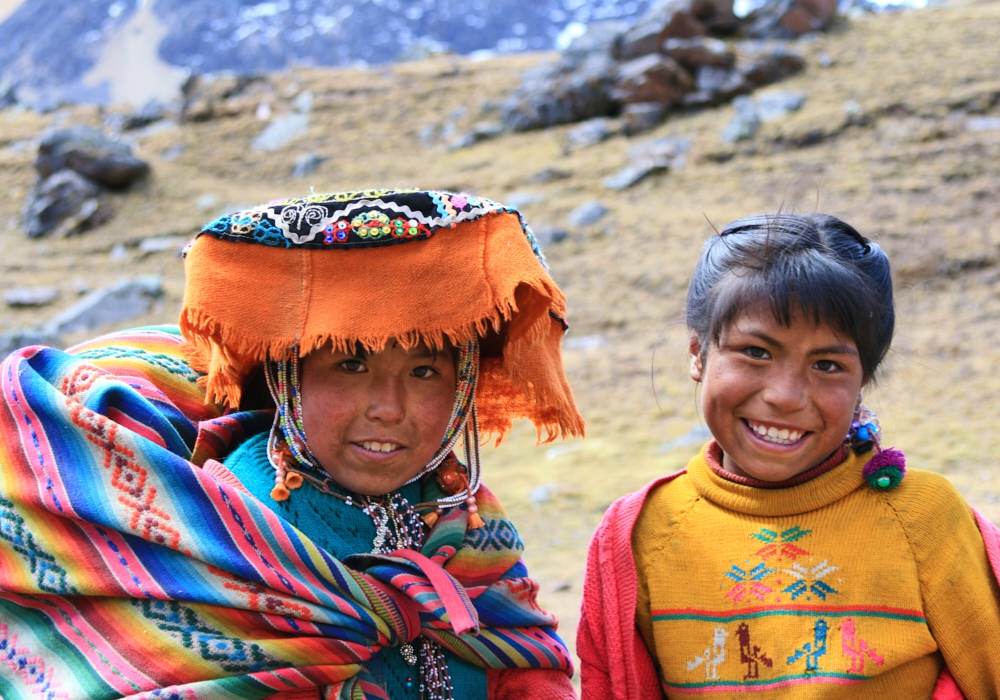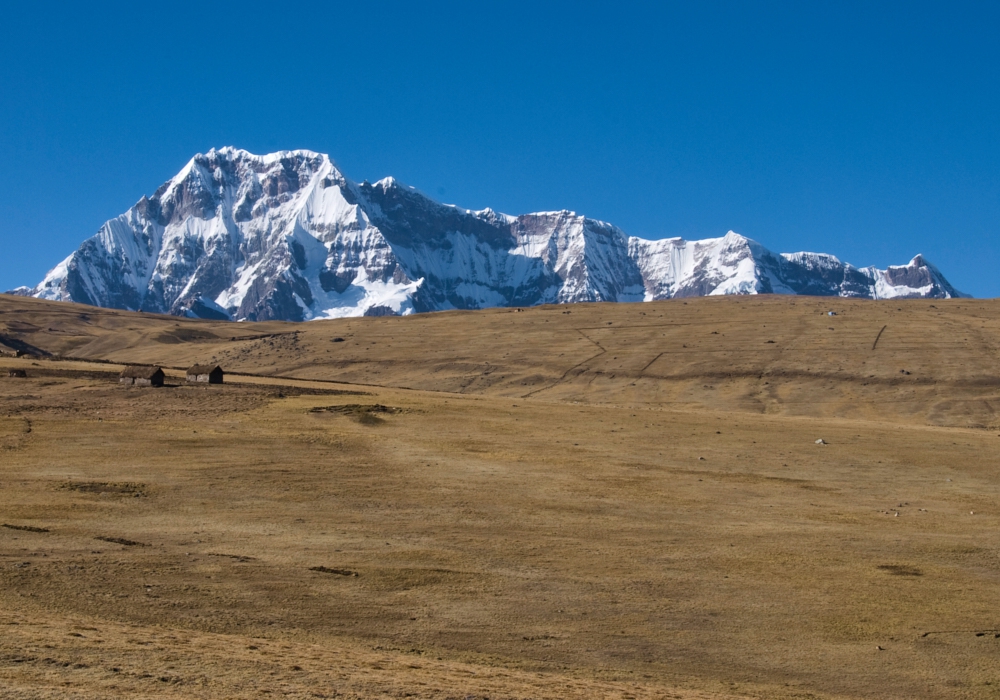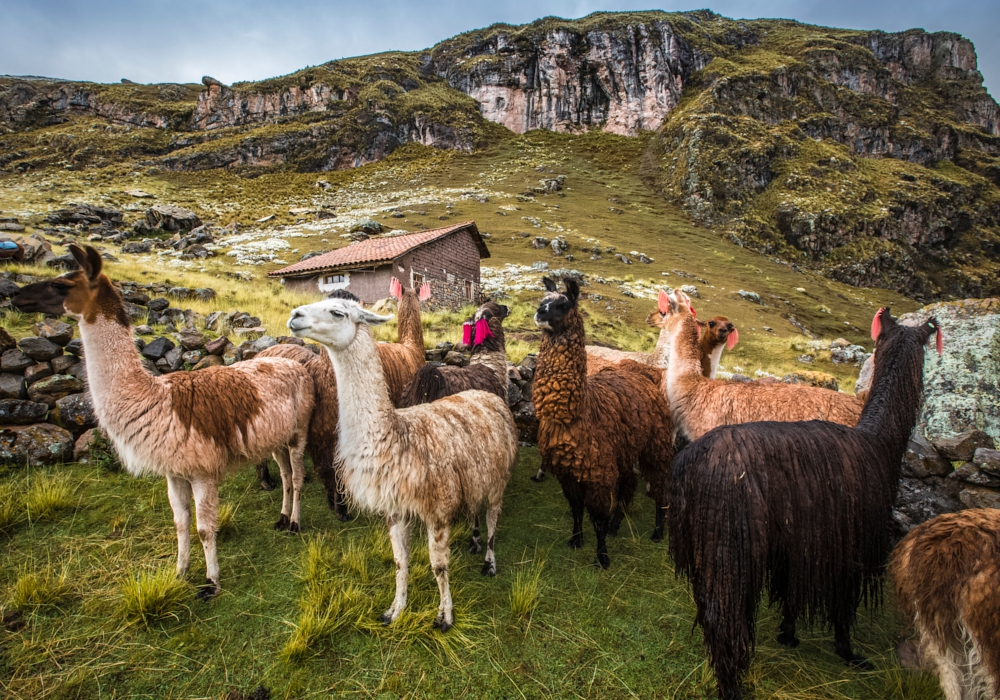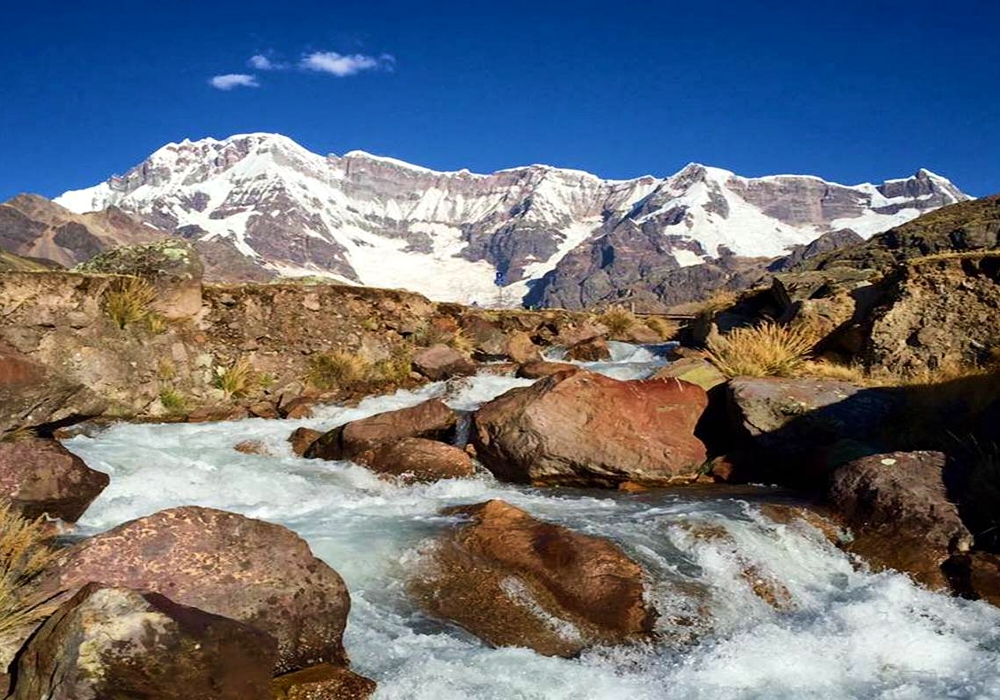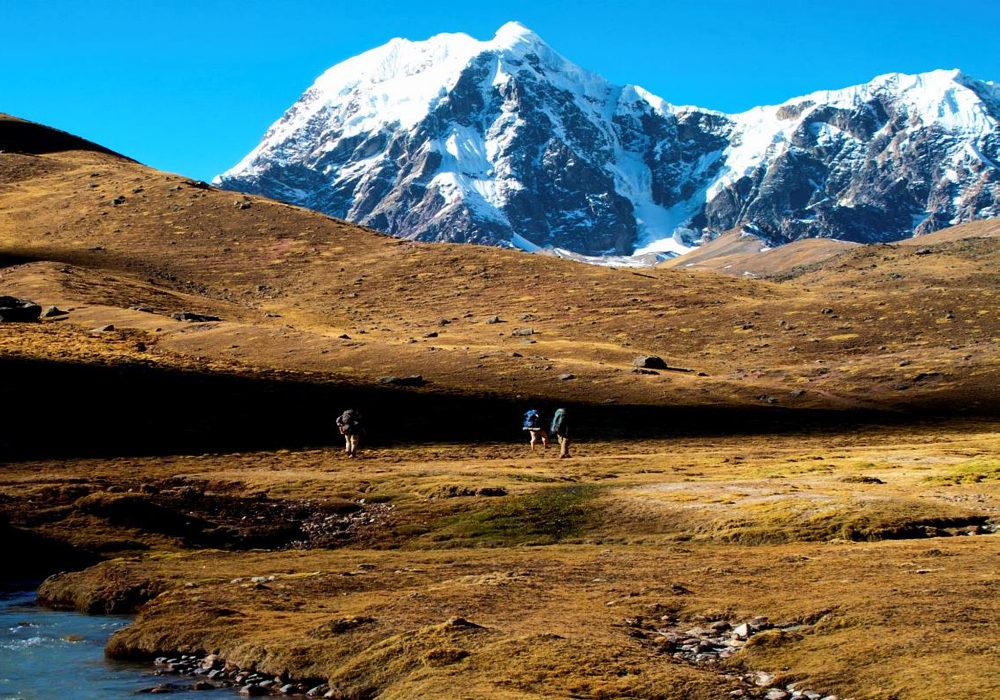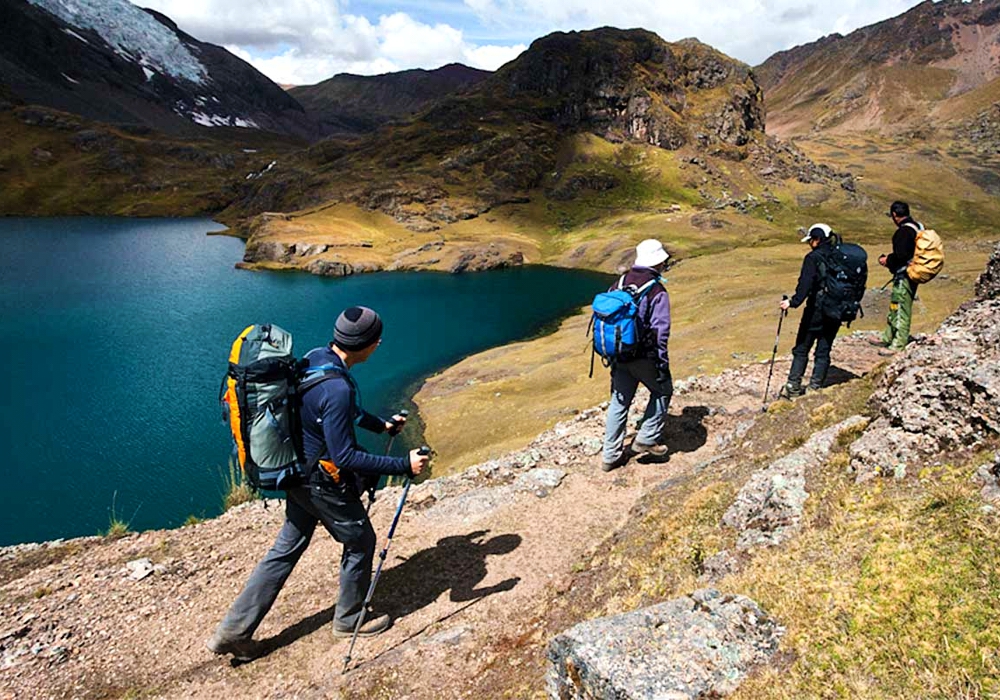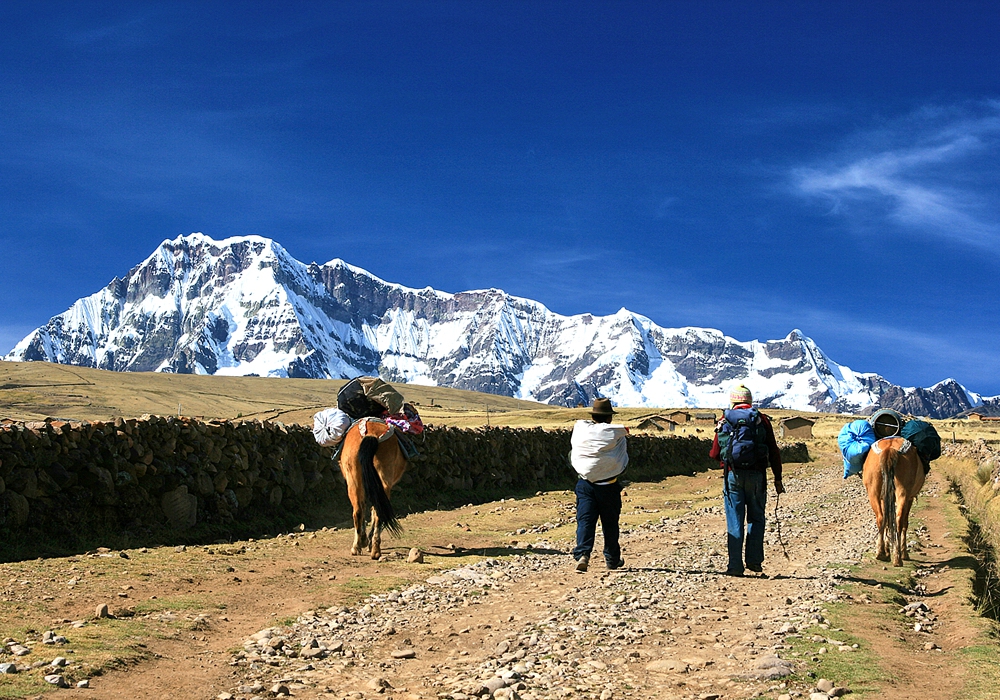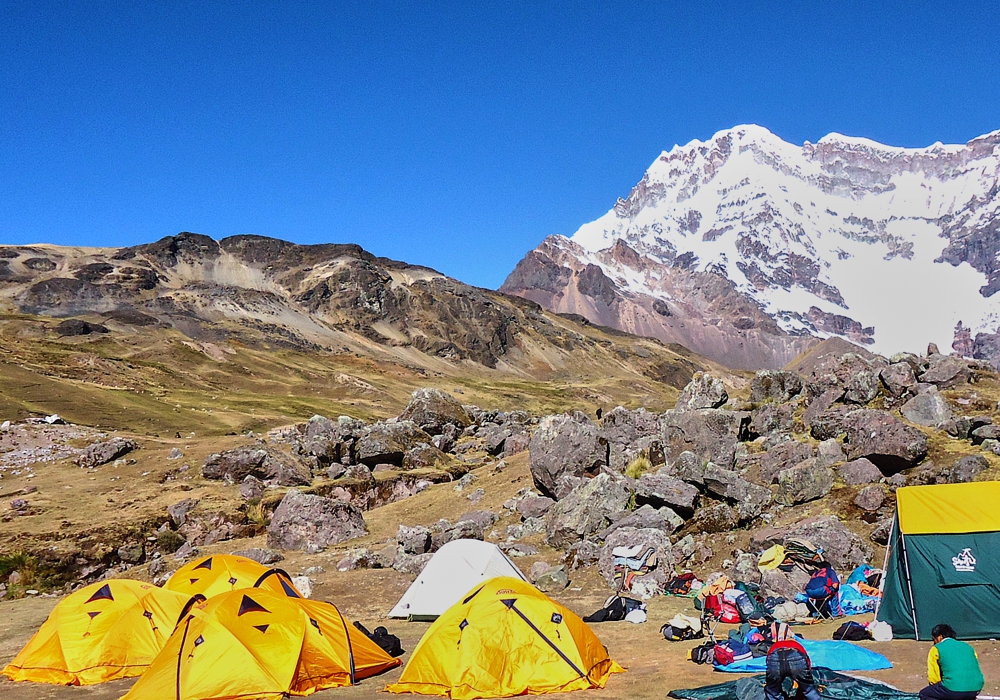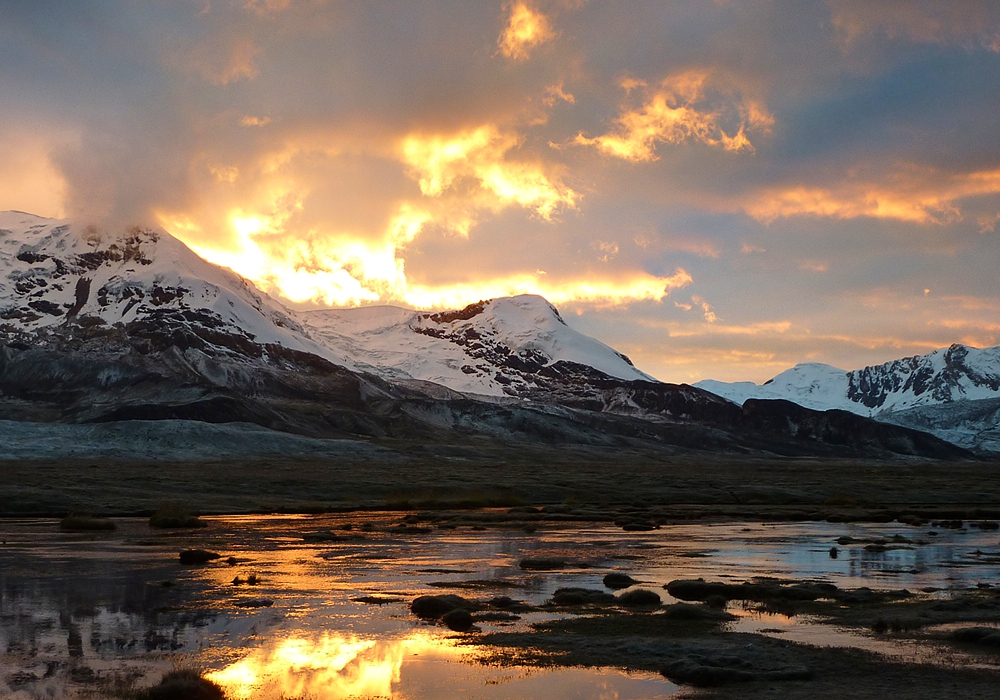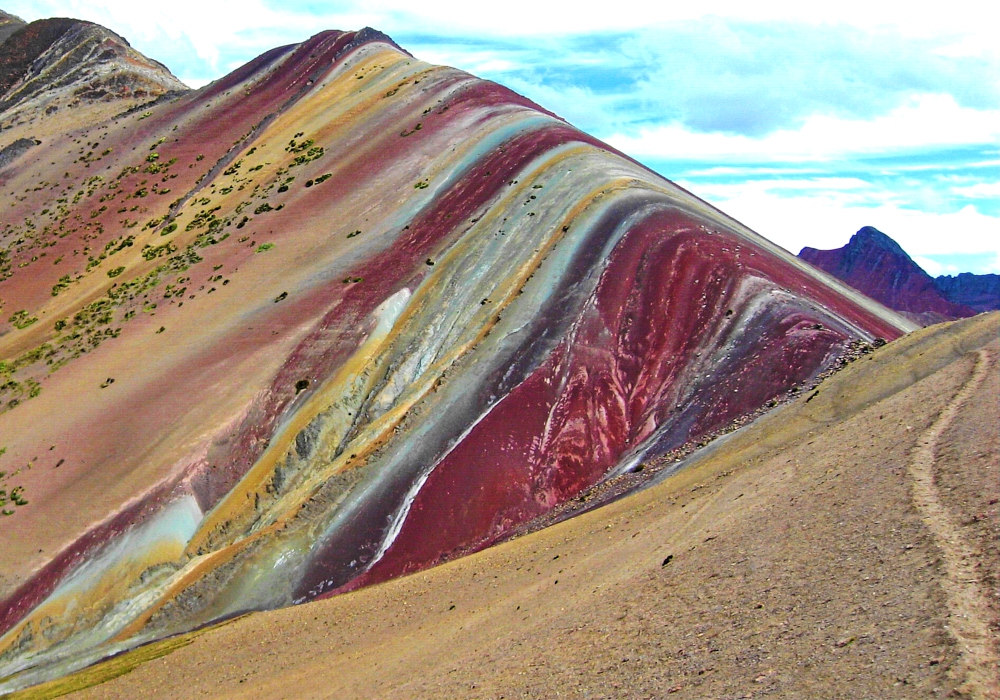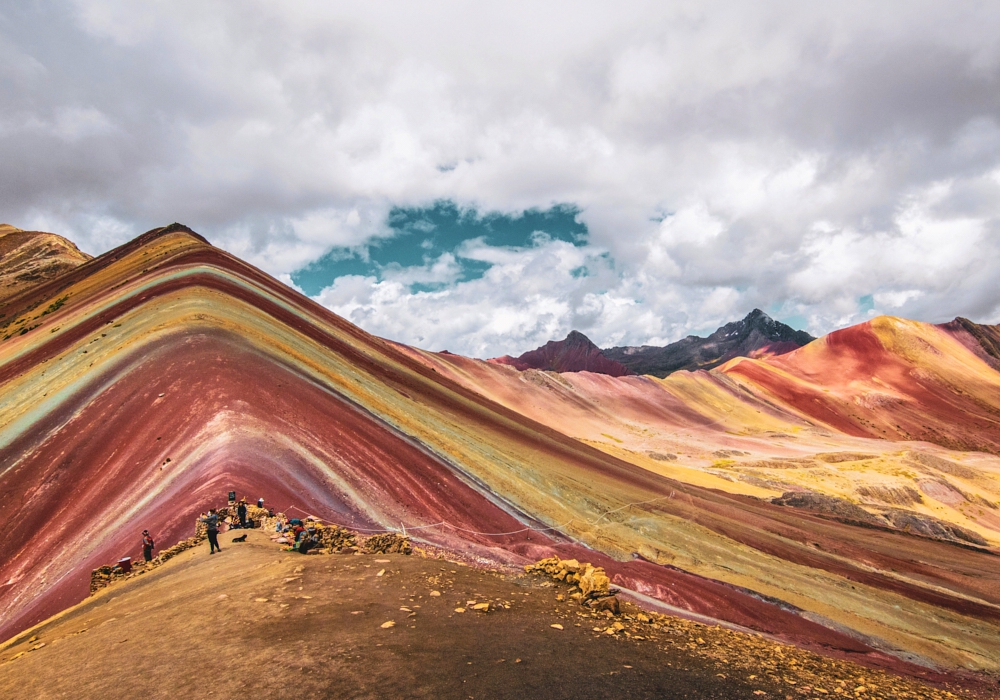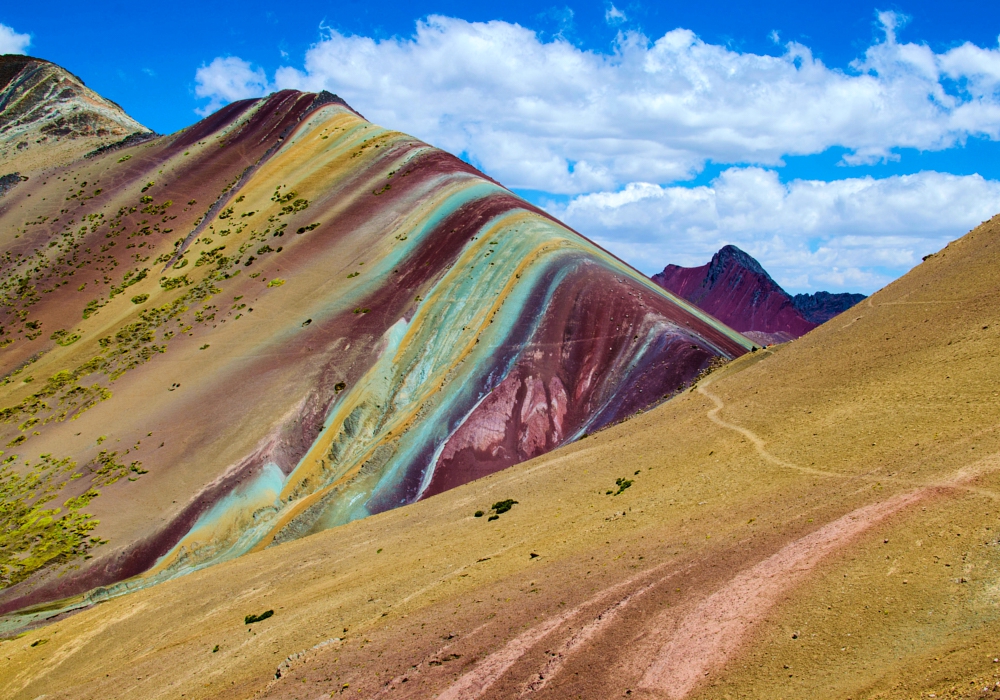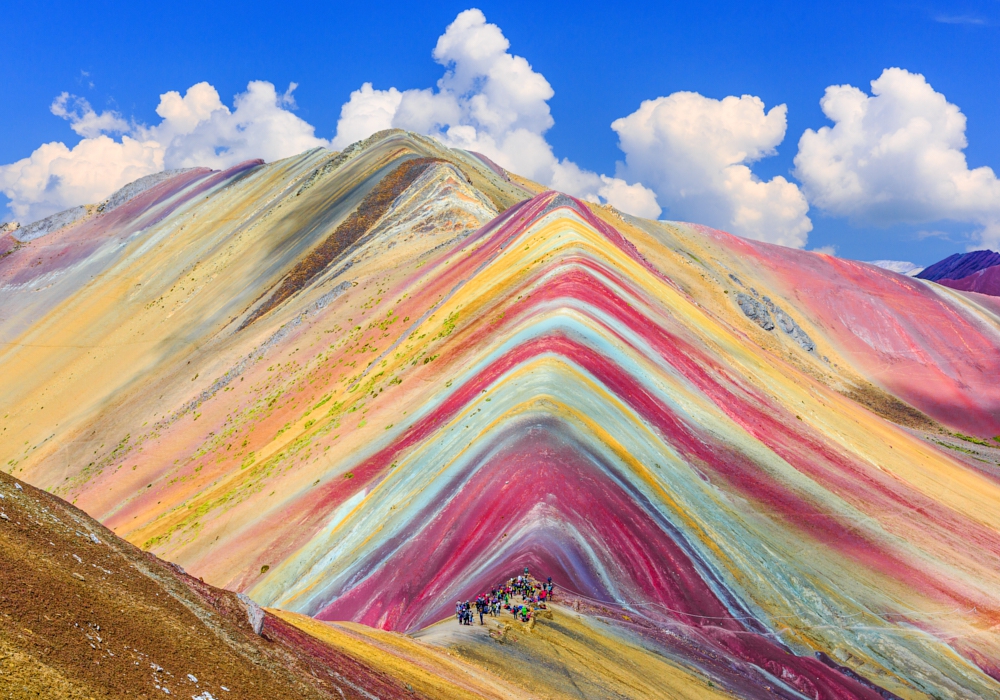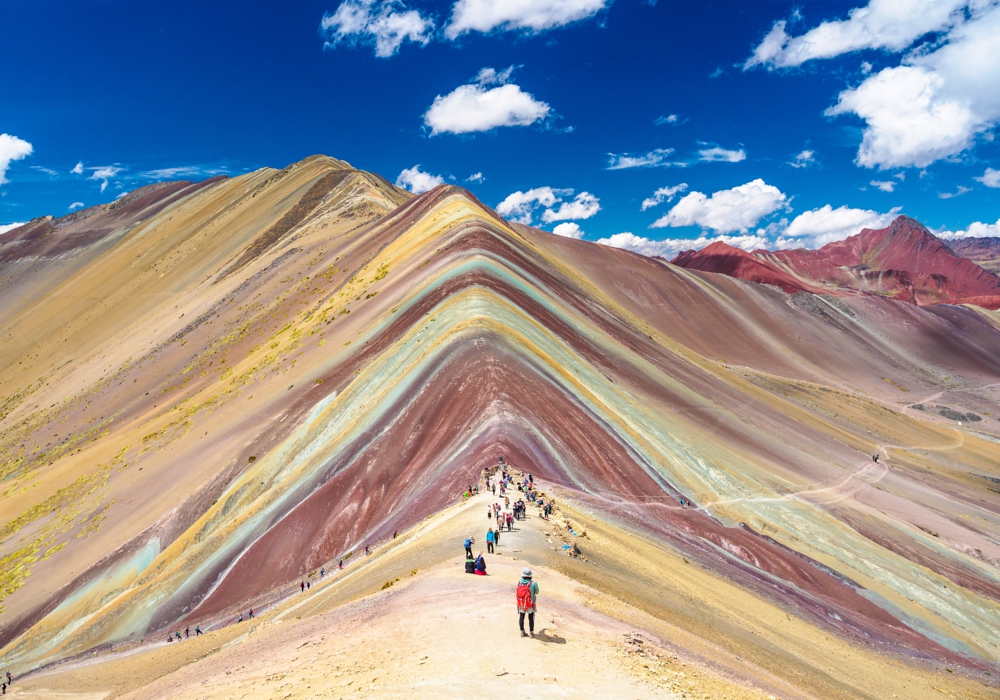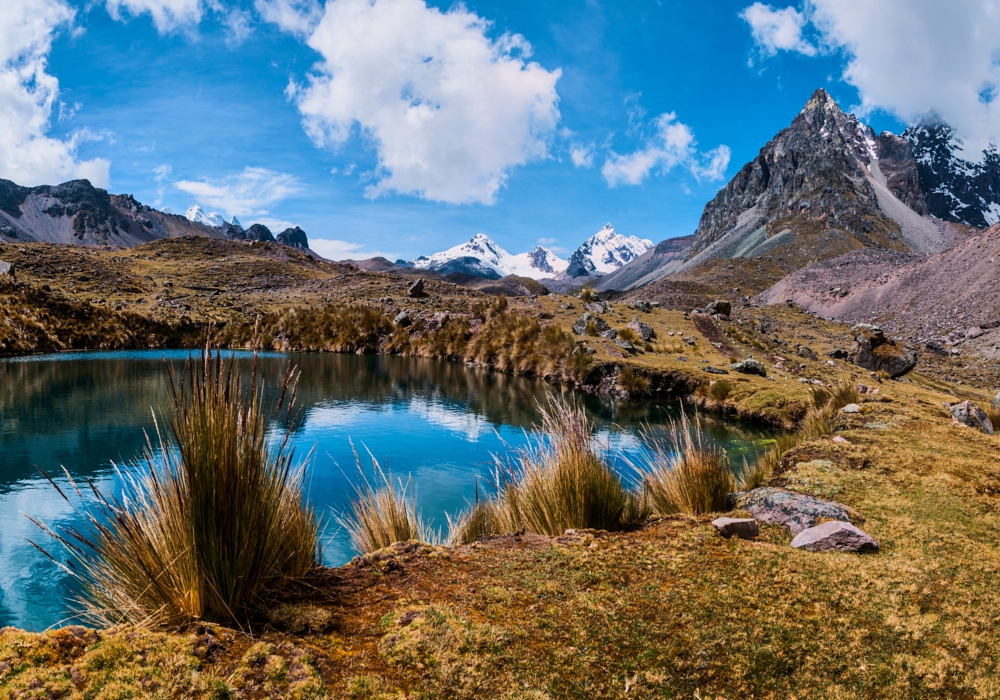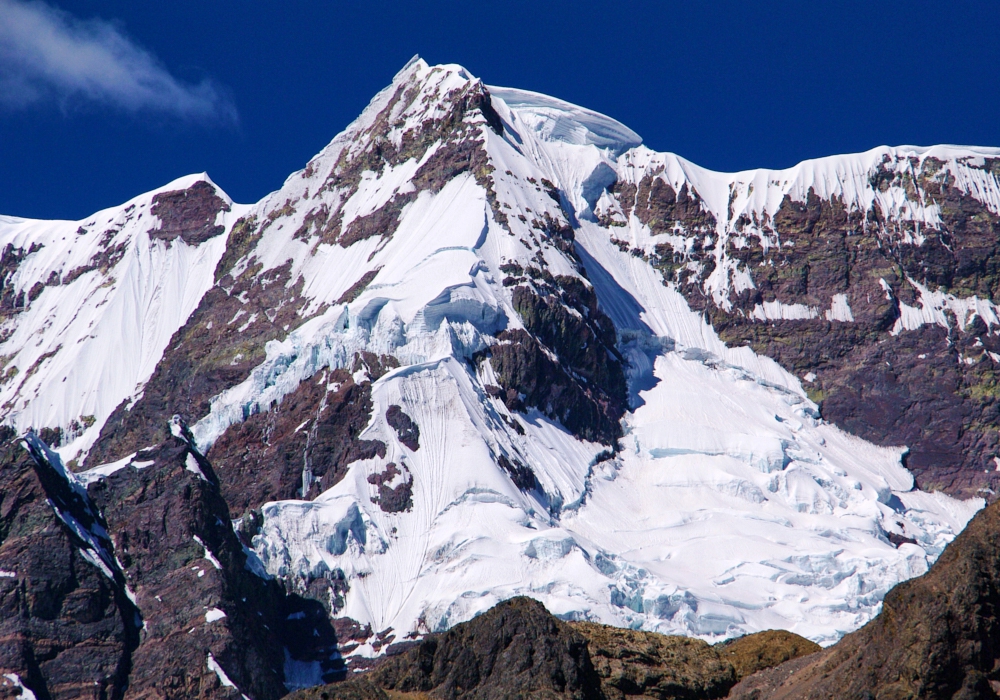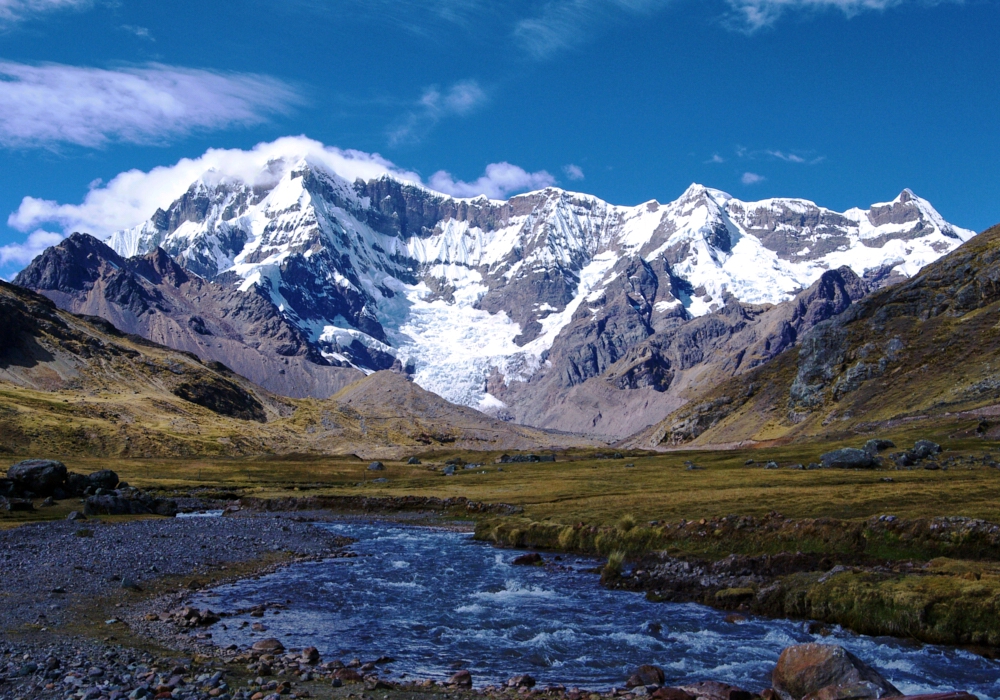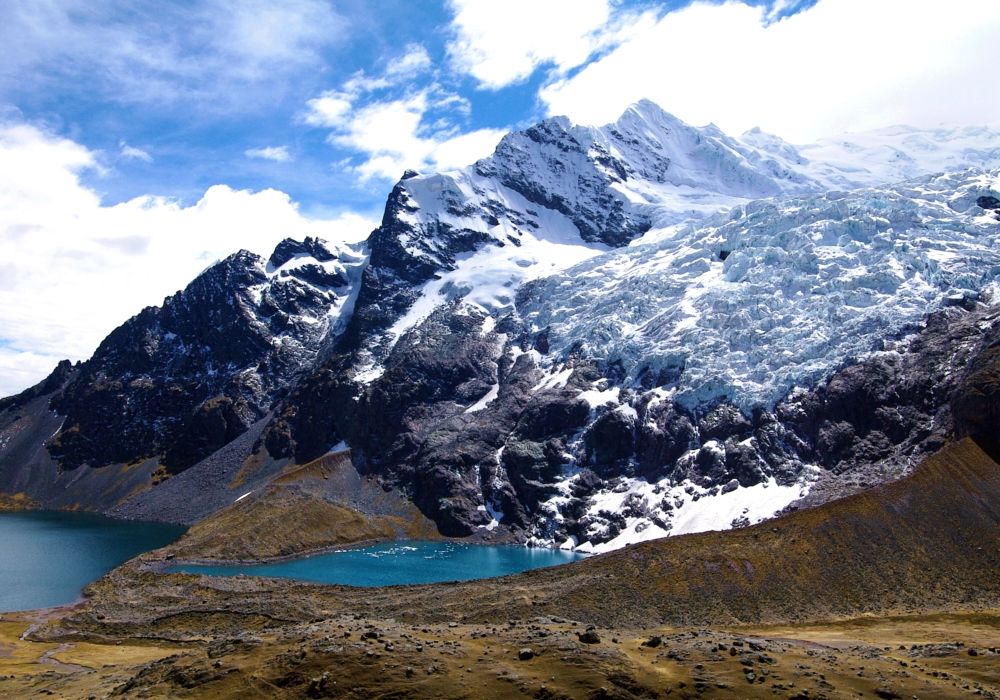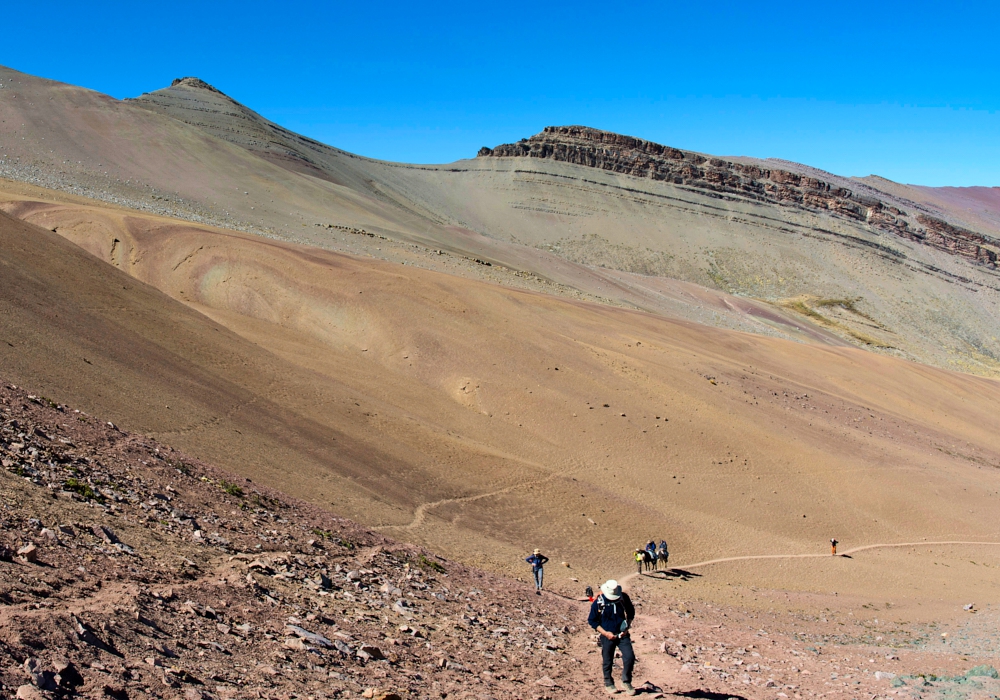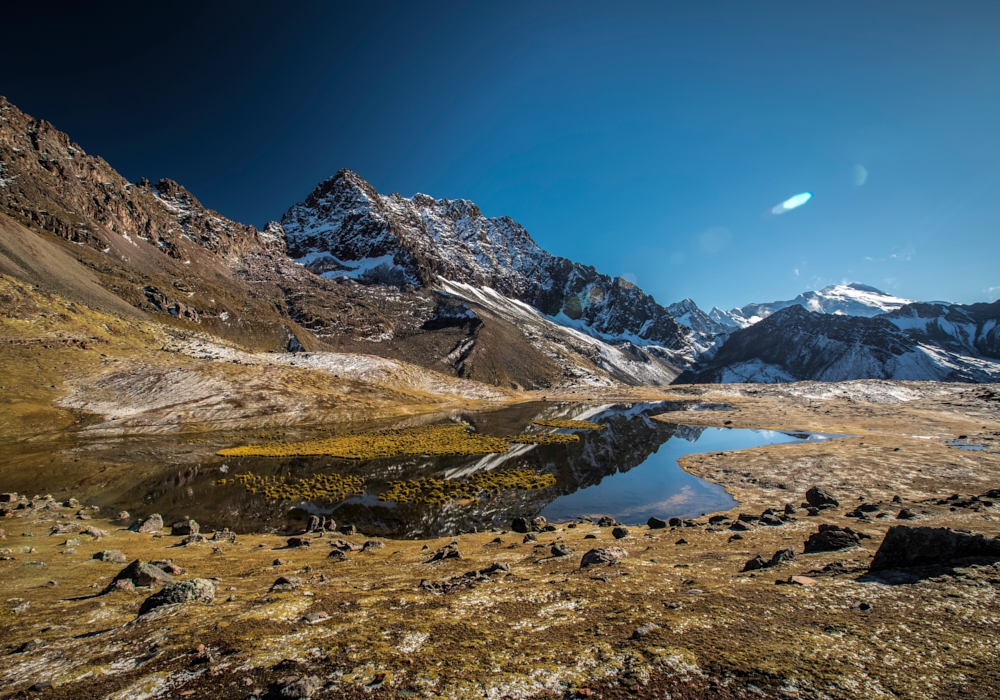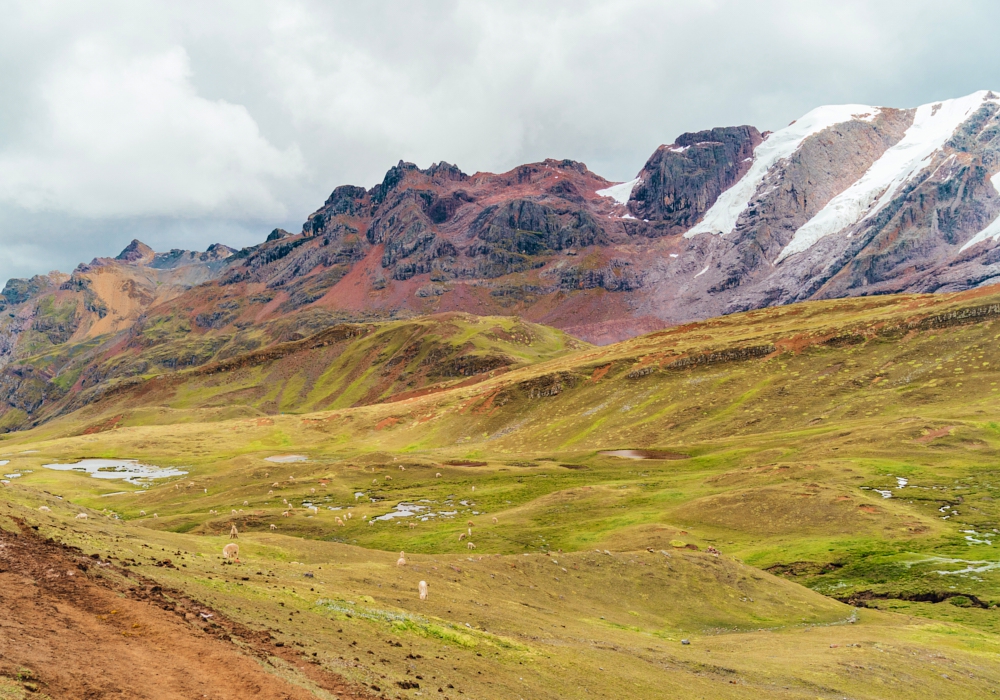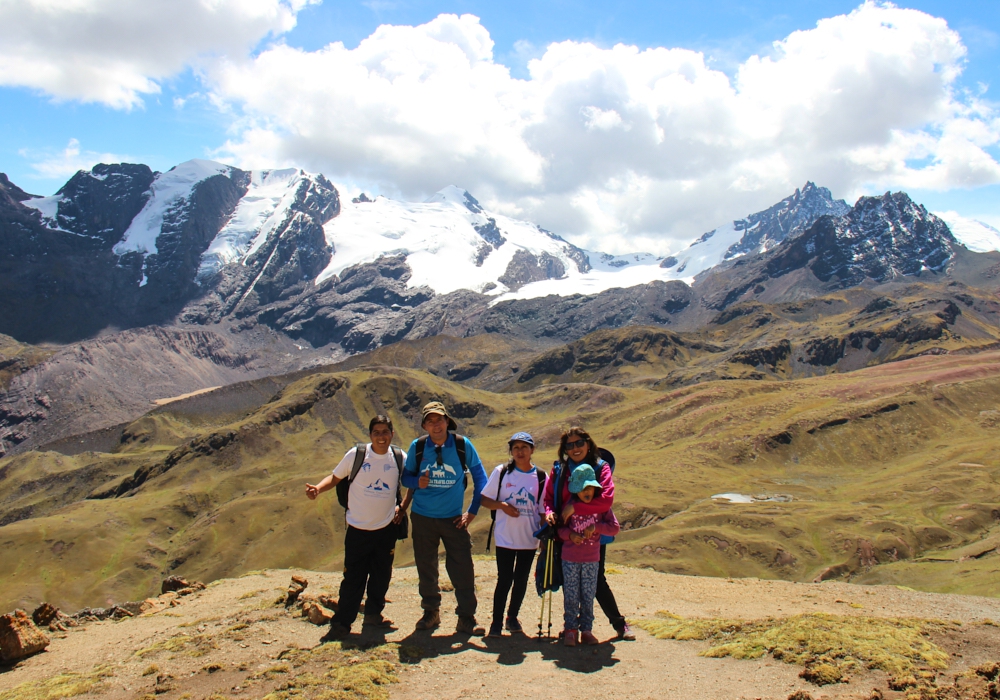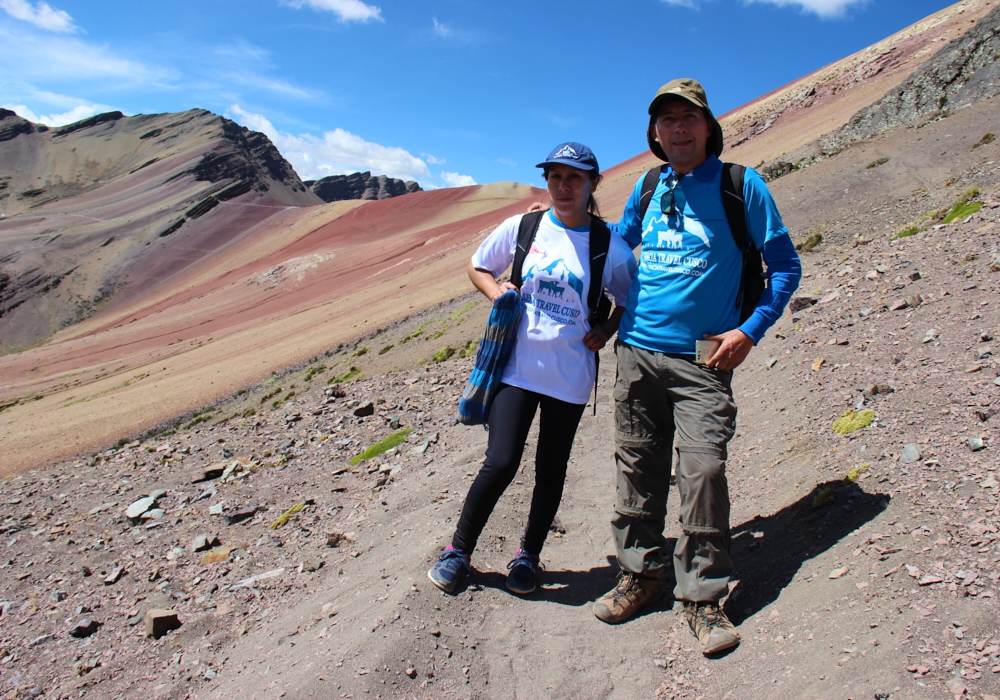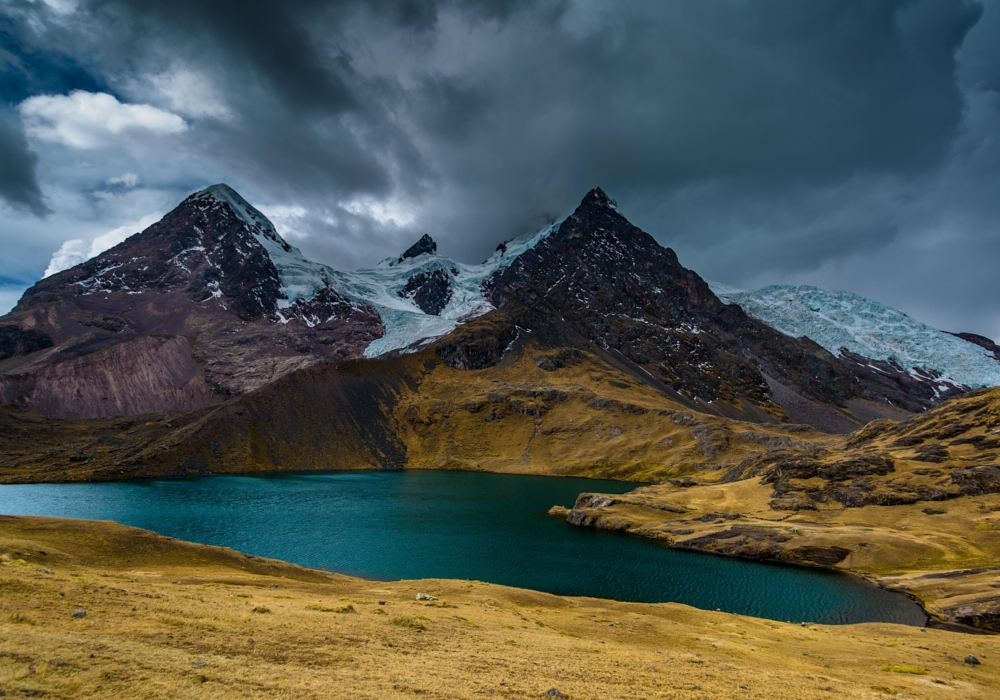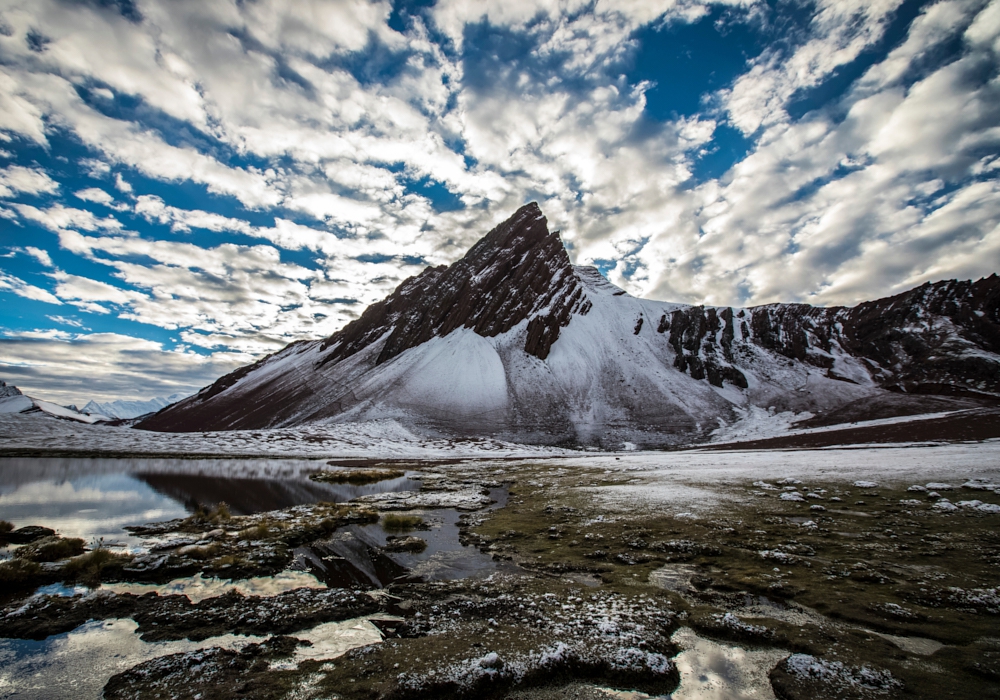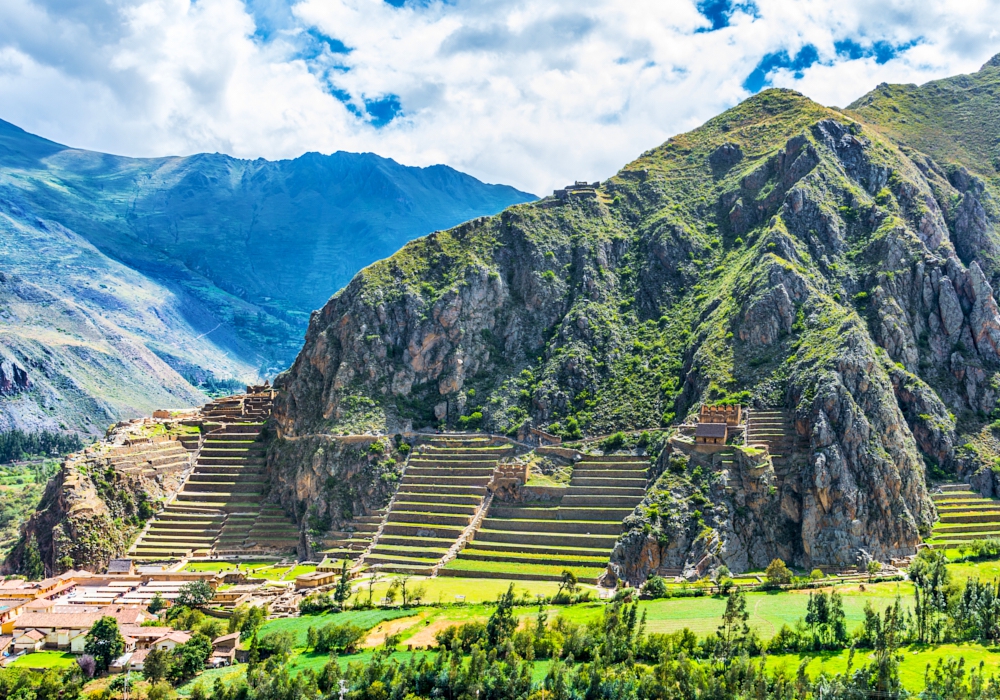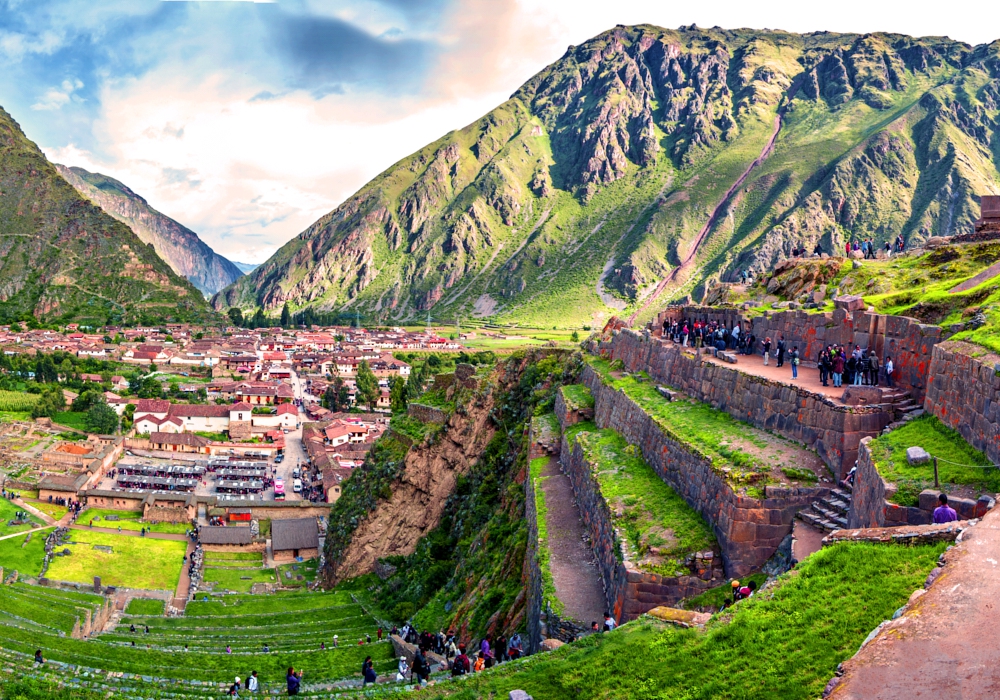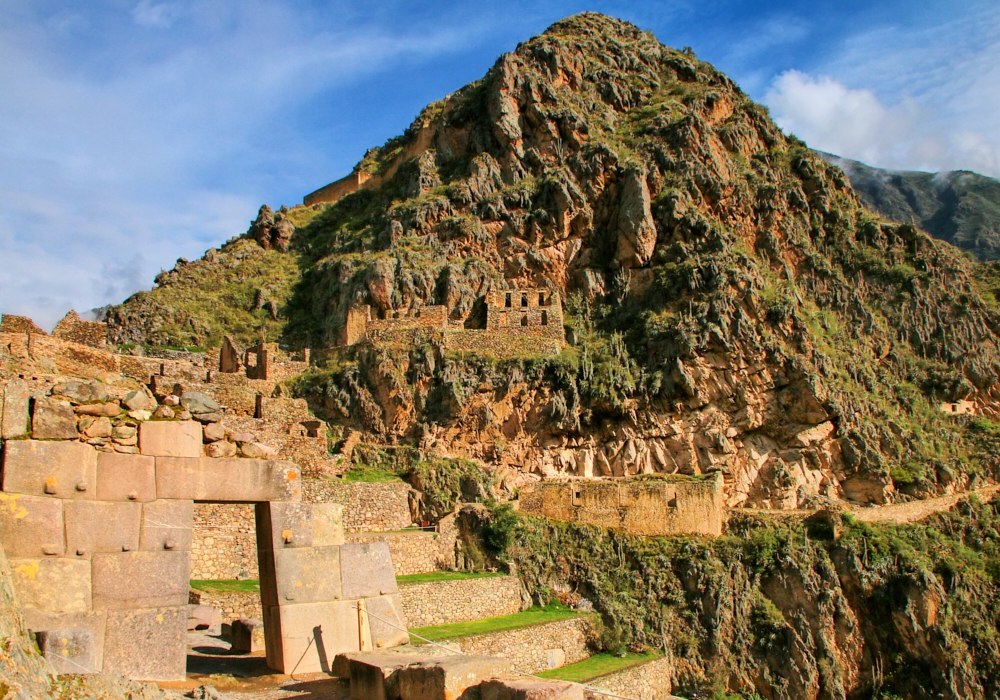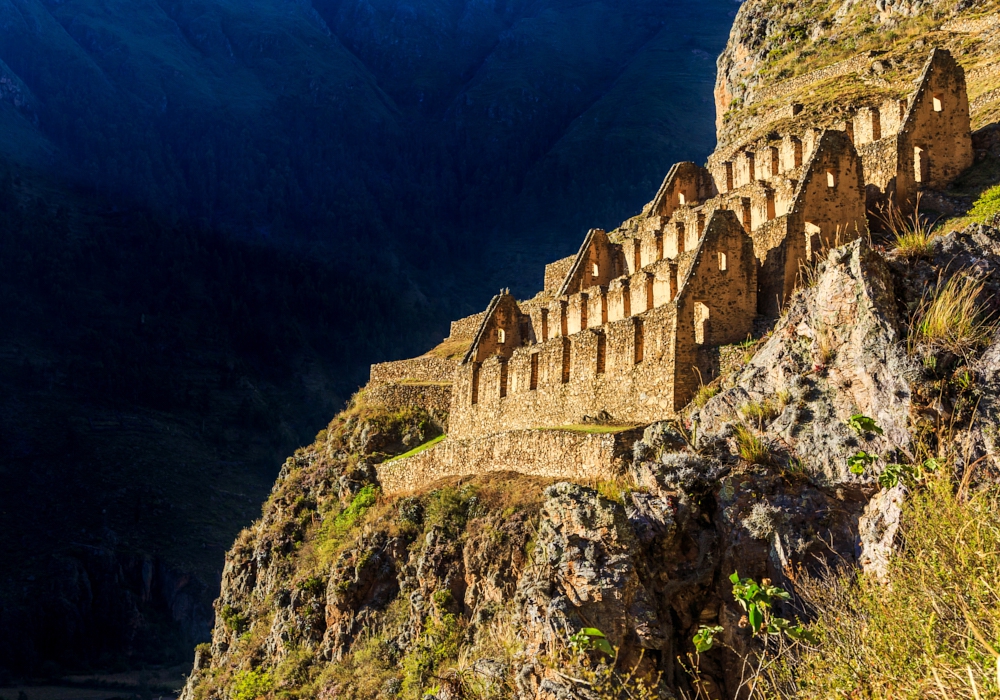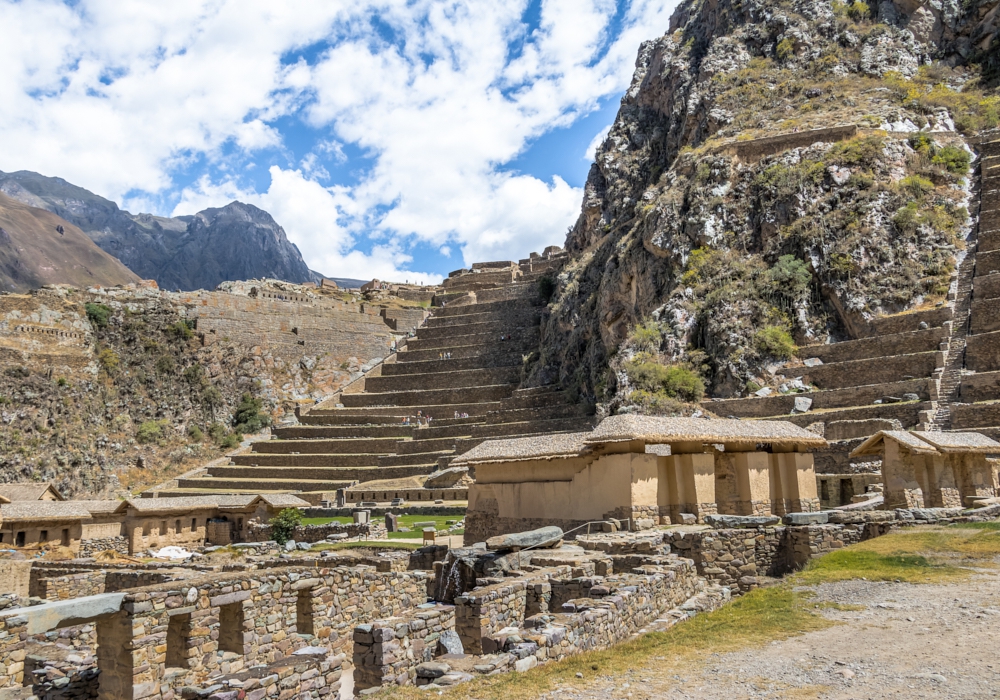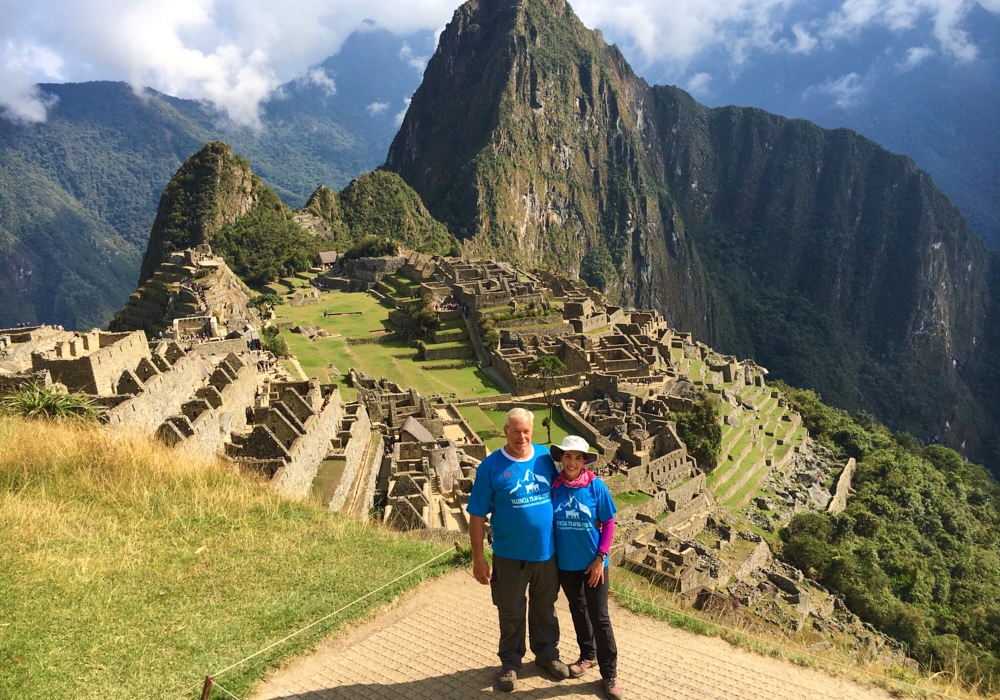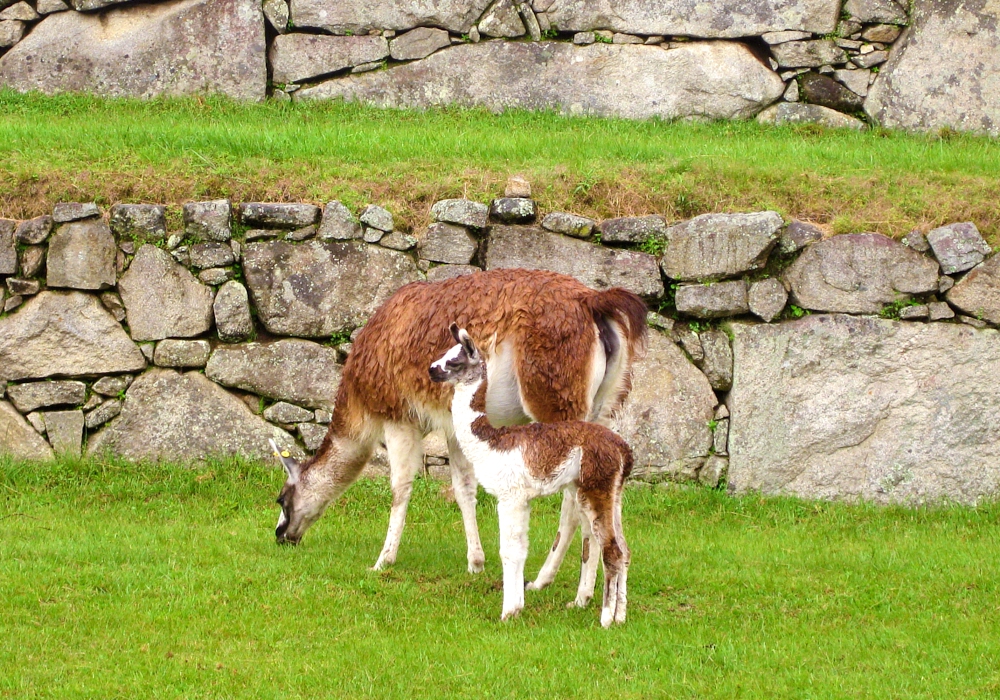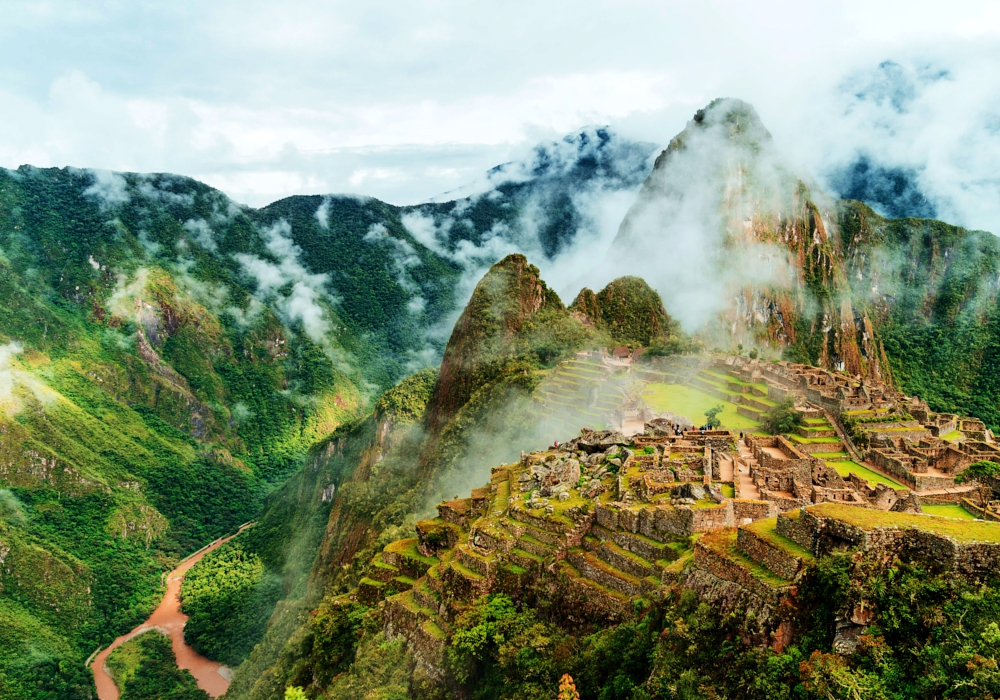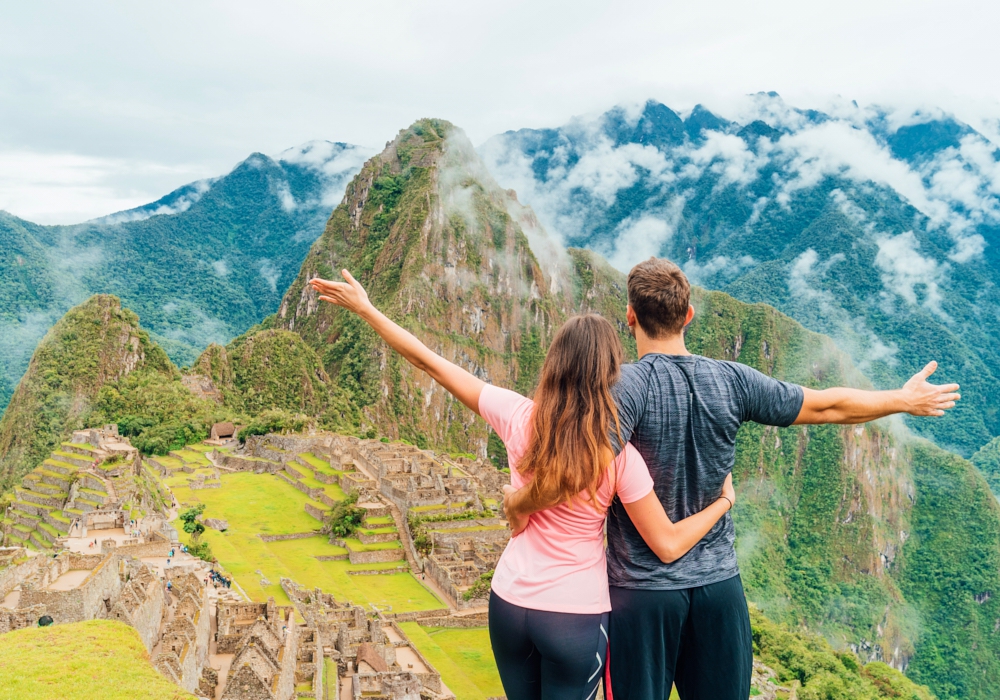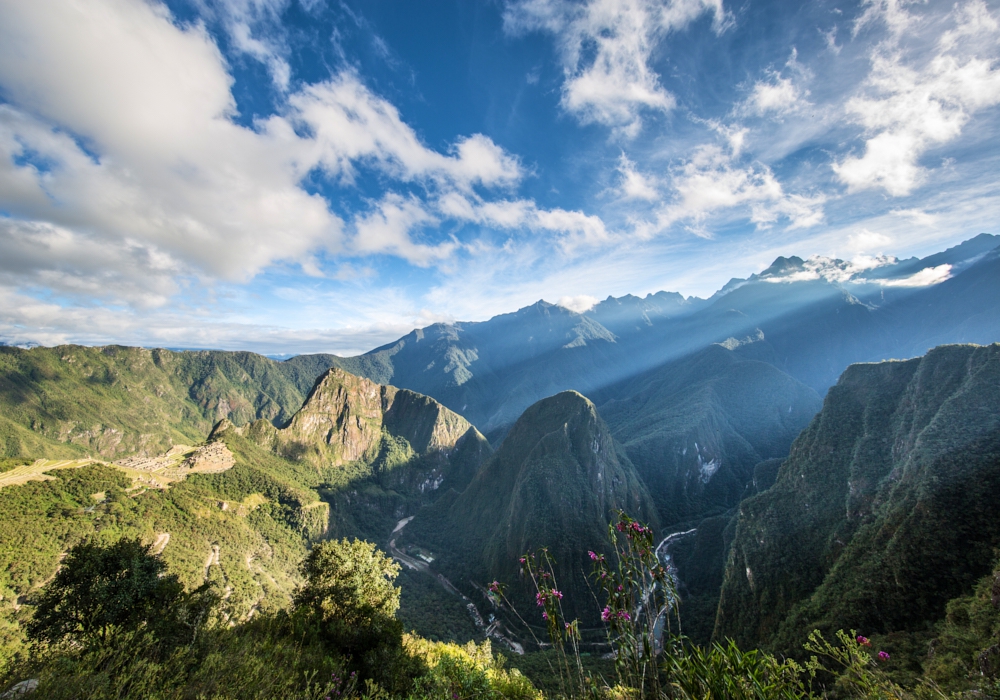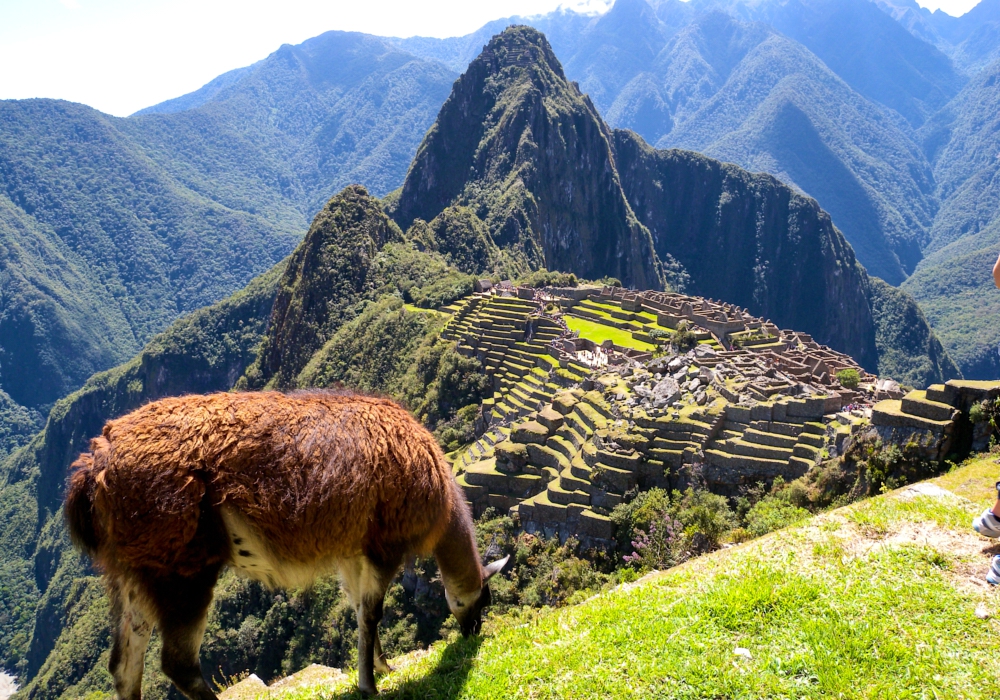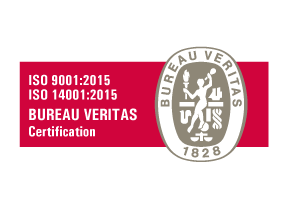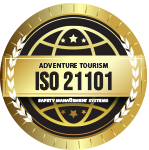10 Day Ausangate, Rainbow Mountain & Machu Picchu
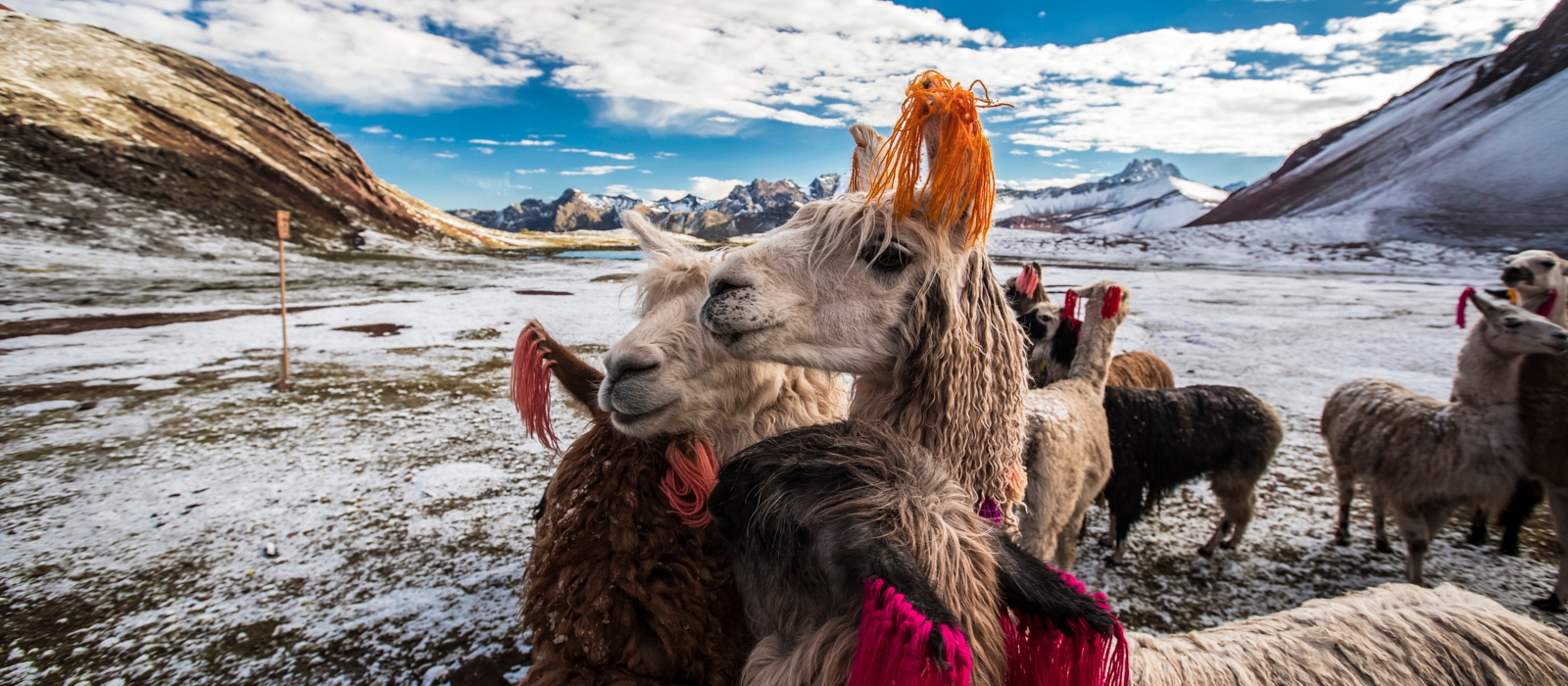
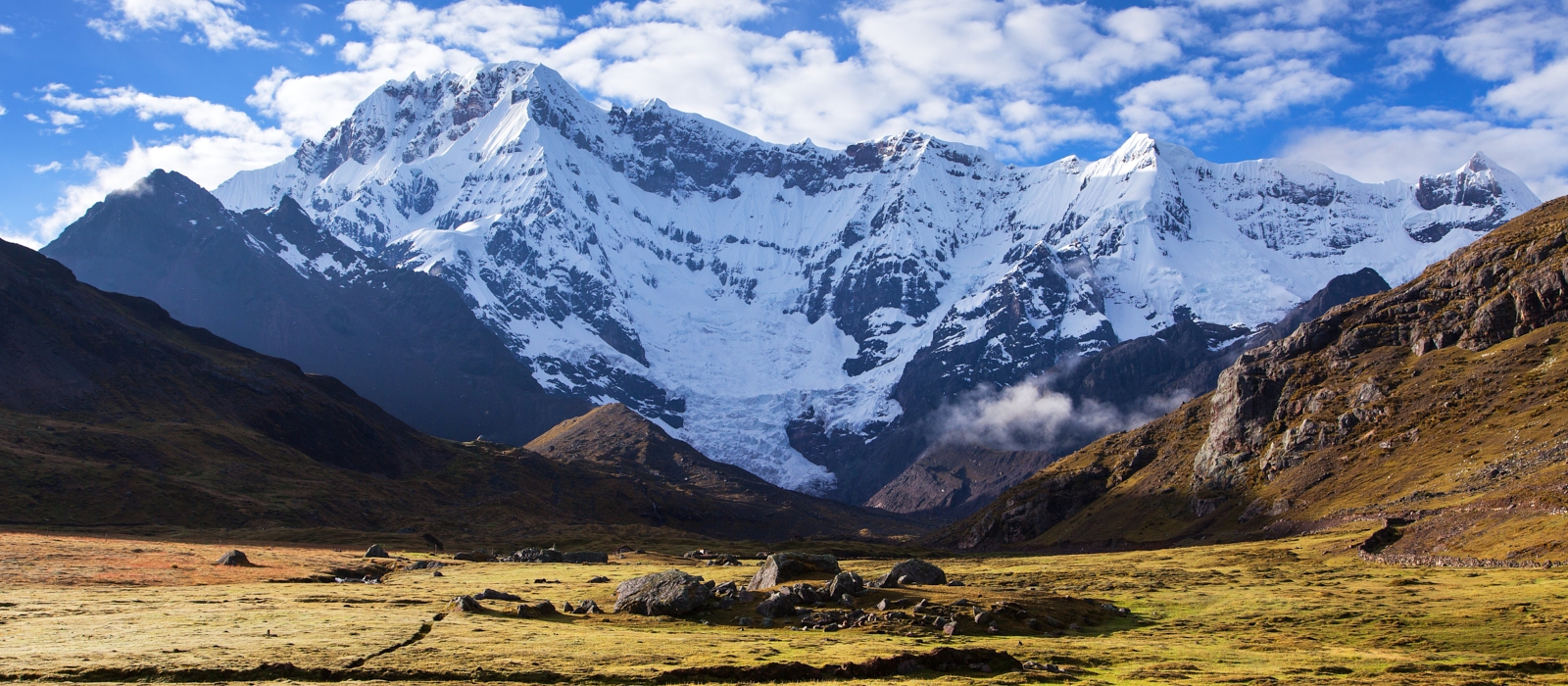

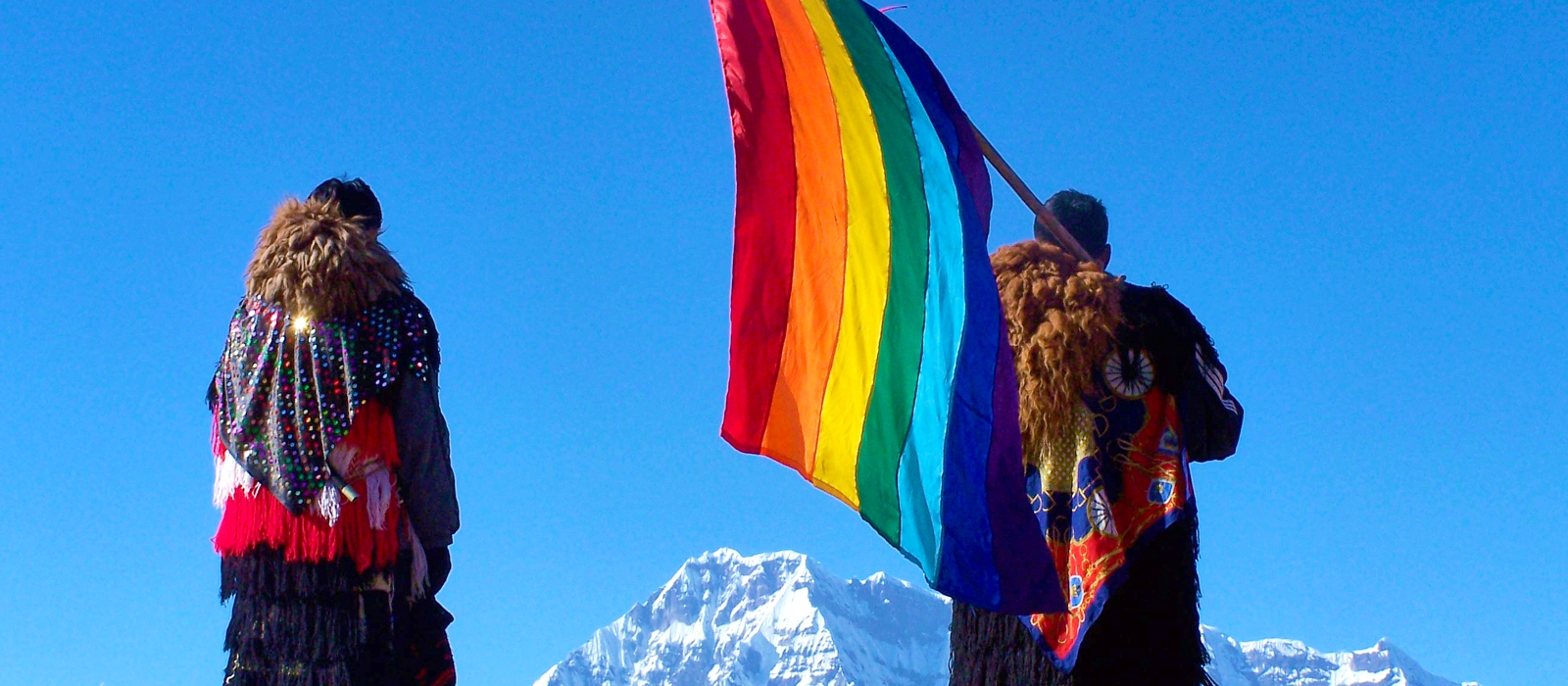
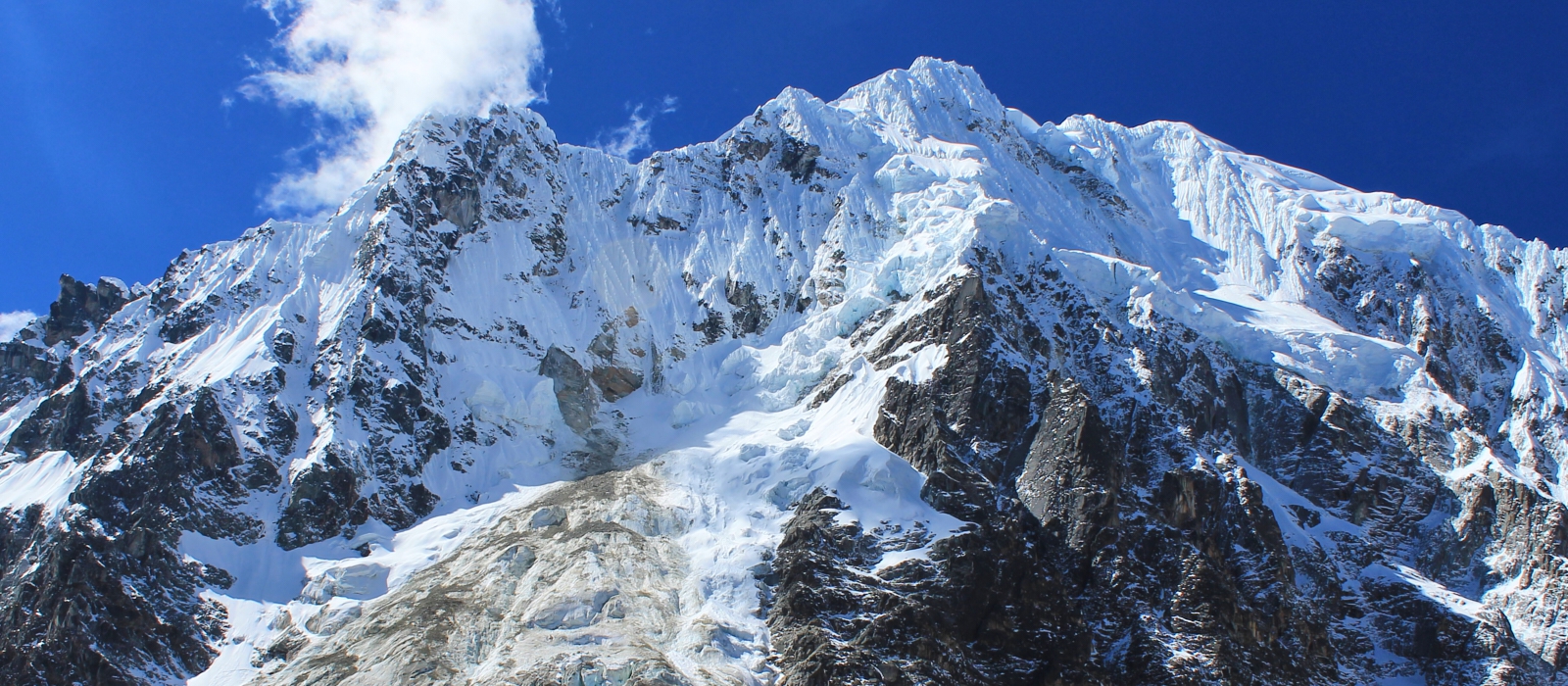
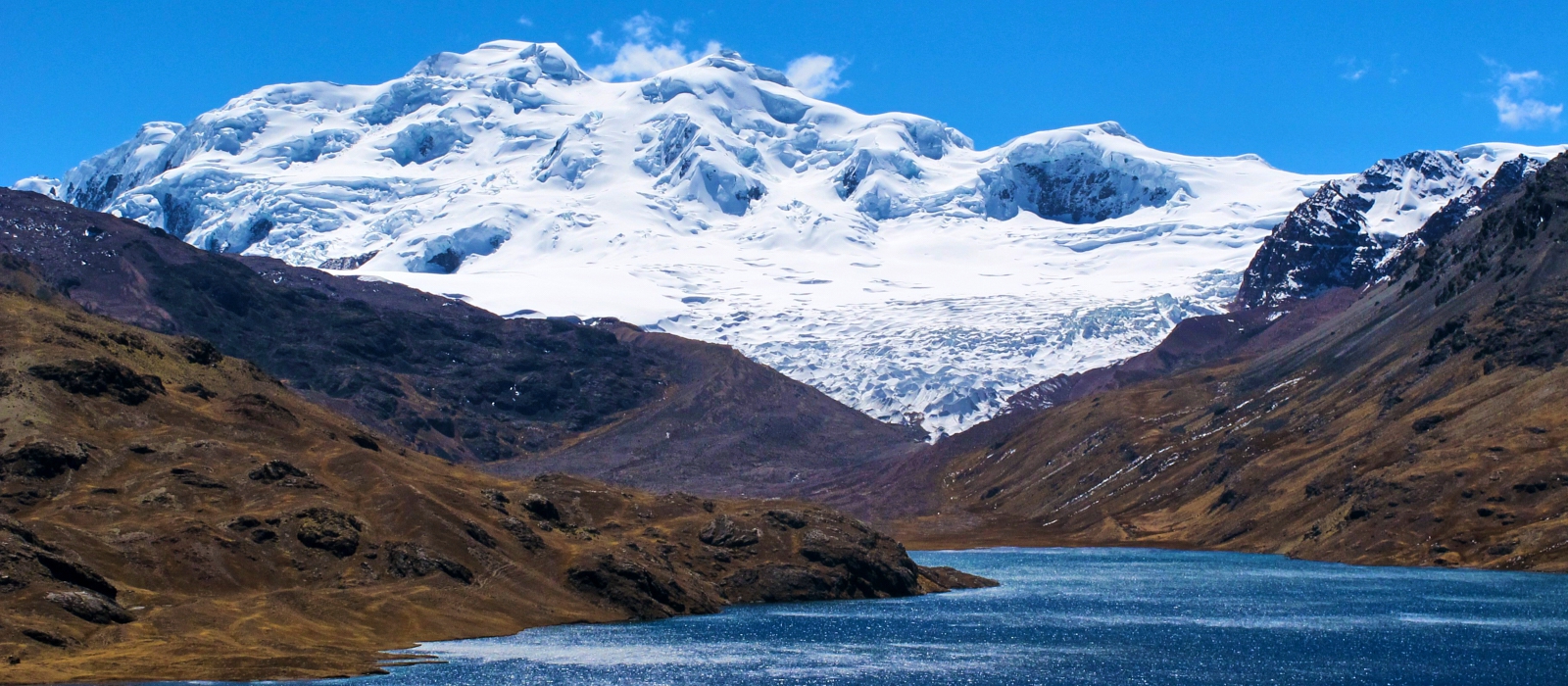
 View All PhotosView All Photos
View All PhotosView All PhotosAdventure
Difficult
Geographical, Trekking, Archaeology
per adult
| Is this tour for me? | ||
| Accommodation: | Not included | |
| Included meals: | Not included | |
Read about this tour by Downloading our brochure
Trip Overview
The Ausangate trek is considered one of the most challenging treks to Machu Picchu, in large part due to the high altitude along the route. But if you’re up for the challenge, the Ausangate trek is one of the most naturally beautiful treks in Peru, passing through unspoiled landscapes of snow-capped mountains, glaciers and crystalline lakes.
The trek takes its name from The Apu Ausangate, Apus meaning “Sacred Mountain, in the native language of Quechua. A huge glacier with various peaks, the highest measuring 6,384 m (20,945 ft). Ausangate was an important mountain in Inca mythology and even today, is still considered a deity. The trek circles around the flanks of this spectacular mountain, through pristine landscapes where the only signs of human activity are tiny hamlets and high mountain trails used by the local llama and alpaca herding communities. This trail is also far less traveled by other trekkers, making it ideal for people who really want to get away from it all get off the beaten path and explore a remote yet stunning part of Peru. Why don’t you try off season? March, April, September and October are particularly good months, either side of high season, the weather is still decent and there are fewer people! our Ausangate trek ends with a day exploring Machu Picchu. It also includes the spectacular “Vinicunca”, the Rainbow Mountain!
Special features of our Ausangate, Rainbow Mountain & Machu Picchu:
Type of Tourism: Trekking, Hiking and Cultural
Places To Visit: Cusco, Sacred Valley, Ausangate, Rainbow Mountain & Machu Picchu
Duration: 10 Days and 9 Nights
Type of Service: some tours are small group service tours and other tours are private
Accommodation: 4 star hotels at every destination that you will visit. These hotels had been carefully chosen and we can guarantee that you will feel comfortable and pampered
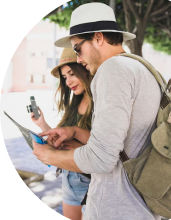 Free Brochure
Free BrochureReady to explore? Download the brochure and start planning!
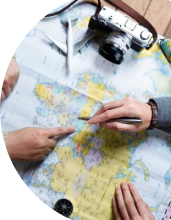
Your FREE travel expert is just a click away
Or Call us now! (888) 803 8004
Day by day schedule
Day 01-Arrival to Cusco
Arrival to Cusco with a transfer to your hotel; a welcome meeting will be organized by your guide for a quick briefing of the tour. The rest of the day can be spent exploring Cusco, the ancient capital of the Inca Empire, set in the Andes Mountains. Discover Spanish churches and mansions that sit alongside Inca remains, visit the local market of San Pedro and their array of products from handicrafts to vegetable products, fresh juices and items for traditional Andean ceremonies. In the evening, enjoy the eclectic restaurant options available and try some traditional or fusion dishes. We recommend local restaurants that use local organic products from the region and will be happy to give you some recommendations.
Day 02 -Cusco Open Day
After breakfast, enjoy a free day to explore Cusco at your ease. The capital city of the Inca Empire is now the undisputed archaeological capital of the Americas, as well as the continent’s oldest continuously inhabited city. You may visit the local archaeological sites of Saqsaywaman, Tambomachay and Qenqo or you can take part in a Peruvian cooking class or chocolate making class, depending on how you want to spend your free day. We can help arrange and suggest all activities available in this incredible imperial City.
Day 03 -Cusco to Ausangate
Our trekking adventure begins when we pick you up from your hotel in Cusco at around 4:30 a.m. We then have a 3.5-hour drive through spectacular scenery, stopping occasionally to enjoy the views, before eventually arriving at the village of Upis. Upis sits at 4,350 m (14,272 ft) above sea level, and this is where we find the trailhead for our Ausangate trek. Here we will meet our local muleteers and horses, have a hearty breakfast and prepare to set off on our great adventure.
The trek begins with a gradual uphill hike for about 2.5 hours, through a highland valley populated by herds of llamas and alpacas. The views here are already spectacular, with dramatic vistas of Ausangate in the distance. When we arrive at our lunch spot in Pampa Rapa (4,600 m), we can eat while enjoying more views of the sacred mountain. Our specialized chefs not only produce the most delicious food but also use locally sourced ingredients from the nearby villages so that we are directly contributing to the areas where we trek.
After lunch we’ll hike uphill for about 3.5 hours until we reach the first mountain pass, called Arapa, at 4,800 m. This is our highest point on Day 1. From here it’s a 1.5-hour trek downhill until we reach our first campsite at Yanacocha (4,650 m), where we’ll set up camp and prepare dinner near a beautiful lagoon and beneath Ausangate snow peak.
Hiking Time: 6 – 7 hours
Hiking Distance: 12 km / 7.46 miles
Lowest Point: 4,350 m / 14,272 ft
Highest Point: 4,800 m / 15,748 ft
Day 04 -Our Ausangate Adventure Continues
Waking up to watch the beautiful sunrise, we’ll first have a tasty breakfast before starting our second day of trekking. We begin on a trail with a series of ups and downs, passing some of the prettiest scenery yet. Here, blue and turquoise lagoons are dotted all around the foot of the Ausangate Massif, creating a magical landscape that wouldn’t look out of place in a Lord of the Rings movie.
After hiking for about 1.5 hours, we will start ascending a switchback trail that takes us up to the second mountain pass on our trek. This pass sits at 5,000 m (16,404 ft.) and from here we will have dramatic views across the Vilcanota range, looking out in various directions over craggy mountains, coloured hills, shimmering lagoons and glaciated peaks. We will then hike down from the pass to the valley below, and then trek up the valley to reach our lunch spot at Ananta (4,650 m).
After an energy-rich lunch, we will continue trekking uphill for 2 hours to reach the next pass, Warmisaya, again at around 5,000 m. From here, we’ll be able to see the Rainbow Mountain in the distance. The last section of our day’s trek is downhill for 30 minutes until we reach our second campsite at Qomercocha (4,680 m).
Hiking Time: 8 – 9 hours
Hiking Distance: 12 km / 7.46 miles
Lowest Point: 4,600 m / 15,092 ft
Highest Point: 5,000 m / 16,404 ft
Day 05 -Rainbow Mountain to Ausangate Qocha
Today we visit the beautiful Vinicunca, also known as the Montaña de Siete Colores or Rainbow Mountain. After an early breakfast, we’ll hike for about 1.5 hours until we reach the famous Rainbow Mountain, at about 5,050 m. Our early start means we’ll beat the large crowds that visit the mountain, and we should have it all to ourselves for about 45 minutes -- enough time to enjoy the splendid colours of the striped landscape, the result of varied mineralogical compositions on the slopes and summits.
After Rainbow Mountain, we will return by the same trail to Ananta, where we had lunch yesterday. We’ll have lunch here again, at around 12:30 p.m. Then we will continue hiking for three more hours to the next campsite, called Ausangate Qocha (4,700 m), where we’ll set up camp and have dinner.
Hiking Time: 8 – 9 hours
Hiking Distance: 15 km / 9.32 miles
Lowest Point: 4,600 m / 15,091 ft
Highest Point: 5,050 m / 16,568 ft
Day 06 -Ausangate Qocha to Jhampapampa
Today is the shortest day of trekking so far in terms of distance covered, but we will be trekking up to the highest point on our Ausangate adventure. After breakfast, we’ll begin trekking up to the Palomani mountain pass, which sits at 5,130 m (16,831 ft) above sea level – the highest pass on the whole trail. It’s a challenging hike, especially at this altitude, but we’ll take it slowly and you can stop for a breather whenever you want.
The views on the way up are amazing, but just wait until you reach the pass! All your effort will be rewarded with a spectacular sight as you reach the top and look over to the other side, where a pink lake lies shimmering among colourful mountains and large glaciers.
After enjoying this awe-inspiring view, we will walk down the other side of the pass until we reach a mountain valley. Here we’ll have lunch. Refreshed and re-energized, we’ll continue on in the afternoon, trekking for about two more hours until we reach our next campsite at Jhampapampa, at a comparatively comfortable 4,700 m above sea level. Here we’ll rest with a cup of coca tea, have dinner, and then have a well-earned sleep amid the mountains.
Hiking Time: 7 – 8 hours
Hiking Distance: 10 km / 6.21 miles
Lowest Point: 4,600 m / 15,092 ft.
Highest Point: 5,130 m / 16,831 ft.
Day 07 -Jhampapampa to Ninaparayoq
After another great breakfast cooked by our chef, we will walk gradually up to the last mountain pass of our trek, the Jhampa pass, at 5,060 m (16,601 ft). From here we have amazing views of glaciated peaks right in front of us.
We’ll now start trekking gradually downhill for two hours, passing by more pretty lakes and keeping an eye out for alpacas and chinchillas. Eventually we’ll reach our last campsite at Ninaparayoq (4,700 m). Upon our arrival, we will have a hearty lunch. After that, you’ll have the whole afternoon to relax and enjoy the scenery at your leisure, knowing that the hardest parts of our Ausangate trek are all behind us. Later we’ll have dinner and then hit the sack, on what is our last night of camping under the Andean night sky.
Hiking Time: 5 – 6 hours
Hiking Distance: 8 km / 4.97 miles
Lowest Point: 4,700 m / 15,420 ft
Highest Point: 5,060 m / 16,601 ft
Day 08 -Ninaparayoq to Pacchanta and on to Aguas Calientes
Our morning begins with a hot cup of coca tea and another excellent breakfast, after which we set off on a 2.5-hour downhill hike to the town of Pacchanta, where the trail ends. Here we can soothe our muscles in the local hot springs and have lunch, thinking back on our epic trekking adventure through the mountains. We’ll also say goodbye to our local muleteers, chef and other trekking staff.
We now return to our private transport for the four-hour drive to Ollantaytambo in the Sacred Valley of the Incas. Once we arrive, we can explore this picturesque town, with its ancient cobblestone streets and colourful traditional market. In the evening we’ll have dinner in one of the local restaurants and celebrate the trip with a few well-deserved pisco sours!
Later, at around 7 p.m., we’ll take the train from Ollantaytambo to Aguas Calientes, the town that sits below Machu Picchu. Here we’ll check into our hotel. You’ll probably want a reasonably early night; as the next day we wake early to explore our final destination; the magnificent Machu Picchu.
Hiking Time: 2 – 3 hours
Hiking Distance: 5 km / 3.11 miles
Lowest Point: 2,100 m / 6,890 ft
Highest Point: 4,700 m / 15,420 ft
Day 09 -Machu Picchu in all its Glory (and Return to Cusco)
To best appreciated Machu Picchu, we’ll wake up early in the morning, so we can get to the Inca citadel in good time. You’ll have time for breakfast in Aguas Calientes first, and then your guide will pick you up from the hotel at around 5:40 a.m. We’ll then walk to the bus departure point for the short but zigzagging ascent up the road to Machu Picchu.
We’ll then pass through the gates into the Machu Picchu archaeological site. Here you’ll begin your guided walking tour with our experienced and highly knowledgeable guide. Our tour of Machu Picchu will last about two hours, and will take you to all the most famous and most spectacular parts of the extensive archaeological complex. These include the House of the Guardian, the Intihuatana, the Temple of the Sun, the Sacred Plaza and other key locations. And as we walk around, we’ll have spectacular views of the agriculture terraces of Machu Picchu and across to the surrounding mountains and plunging gorges. After the guided tour you’ll have time to explore Machu Picchu as you please, perhaps walking to some less visited parts such as the Inca Bridge.
Once we’ve finished our tour of Machu Picchu, we’ll take the bus back down to Aguas Calientes where you can relax and have lunch (not included) before we board the train back to Poroy and Cusco. Upon arrival at the station, we’ll be waiting to take you back to your hotel in Cusco, where you’ll finish the entirety of your incredible Ausangate trek to Machu Picchu.
Day 10 -Cusco Airport
After breakfast enjoy your last day at leisure before transferring to the airport for your return flight home via Lima.
Dates & Prices
Secure your spot on the Inca Trail now with our real-time availability information.
Act quickly—these spots sell out fast!
Inclusions:
What's included
- Accommodation: A *star hotel is specially chosen by us for you throughout the itinerary
- Meals: 9 breakfasts, 6 lunch, 6 dinner
- Transport: Private or share
- Your Journeys Highlight Moment: Ausangate mountain, Rainbow mountain and Machupicchu
- Arrival and departure transfer
- Briefing to the tour one day before the trek at 19h00
- An assistant guide for groups of more than 7 people
- All transport between destinations and to/from included activities
- Professional guide who speaks English
- Snacks appropriate for all hours and hot and cold beverages
- Complete set of kitchen equipment and utensils
- Dining room equipment which includes tables, chairs, and a dining tents
- Water (you need to bring water for the first morning then we will provide you with drinking - previously boiled - water)
- Pack horses that will carry the camping equipment, the cooking equipment and the food
- Another packhorse to carry your personal gear that weighs up to 7 kilos
- Ausangate, Rainbow mountain and Machupicchu Entrances fees
- Train ticket from Ollantaytambo to Aguas Calientes
- Train ticket from Aguas Calientes to Ollantaytambo
- First aid kit
- Round trip bus ticket from Aguas Calientes to Machu Picchu
- 24/7 support and emergency line available throughout the itinerary
What's not included
- Airfare to and from destination
- Minimum medical and emergency evacuation insurance
- Trip cancellation insurance or any other travel insurance
- Evacuation: in the event of a serious medical injury, we will coordinate with your travel insurance company to arrange evacuation
- Visas
- Any activity not described in What's Included
- Meals on your own
- Gratuities
- Optional excursions
- Personal equipment such as trekking equipment
- Camping equipment such as sleeping bag or walking stick
- Damages caused by the client to the bus or to the camping equipment
CONTACT US

Contact our travel specialist
Claire
“Let me share with you my knowledge and passion for travelling , helping you to plan the best holidays of your life!”
RELATED TOURS
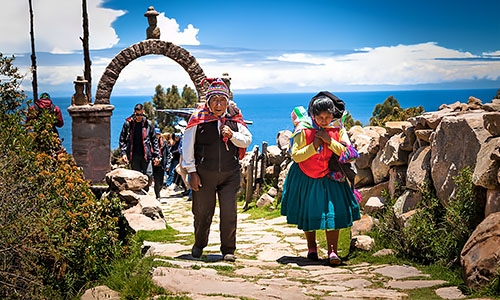
9 Day – The Best of Peru
9DaysThe highlight will of course be the Seventh Wonder of the Modern World, Machu Picchu. In addition, on many of your Vacation Packages in Peru, including this 9-day Best of Peru tour, you will sample the delights of the capital, Lima.
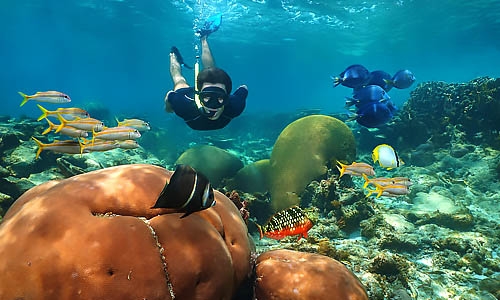
7-Day - The Amazing Yucatan Peninsula
7DaysDreaming of a Yucatan Peninsula tour? Find the perfect trip to the Yucatan Peninsula that fits to explore the natural scenery, culture and history.
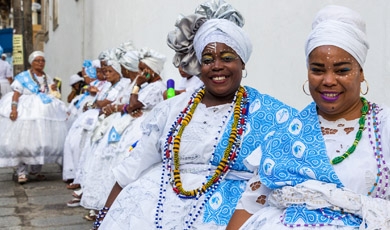
11 Day - Highlights of Brazil
11DaysBrazil is a massive country with many geographical areas, cultures and incredible biodiversity. Salvador in Bahia is famed for its carnival and its pristine, stunning beaches, the fascinating cultural heritage of its Portuguese, African and Indigenous native communities; Rio de Janeiro, is a vibrant city with something for everyone, safe beaches, s
Our Travelers REVIEWS
Certified Excellence: Amazing tours & Adventures
ADDITIONAL INFORMATION
Kickstart your Valencia Travel Peru vacation package by selecting your preferred month of travel in our Dates & Prices section. Here, you'll find all you need to know about our trekking tour package availability and pricing, tailored to fit every season and budget. Navigate through your options to discover the ideal time for your unforgettable tour trip. With just a few clicks, you're on your way to experiencing the beauty and thrill of our Peru adventure packages, or Machu Picchu tour packages, specially curated to your preferences.
Our Travelers REVIEWS
Discover Why Our Passengers Love Valencia Travel: A Glimpse into Our Five-Star Reviews






